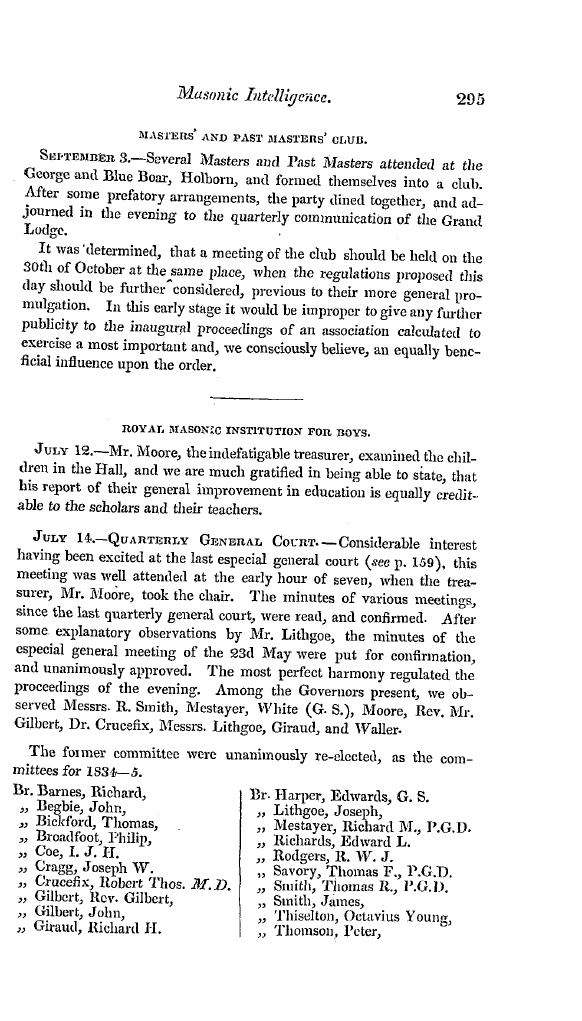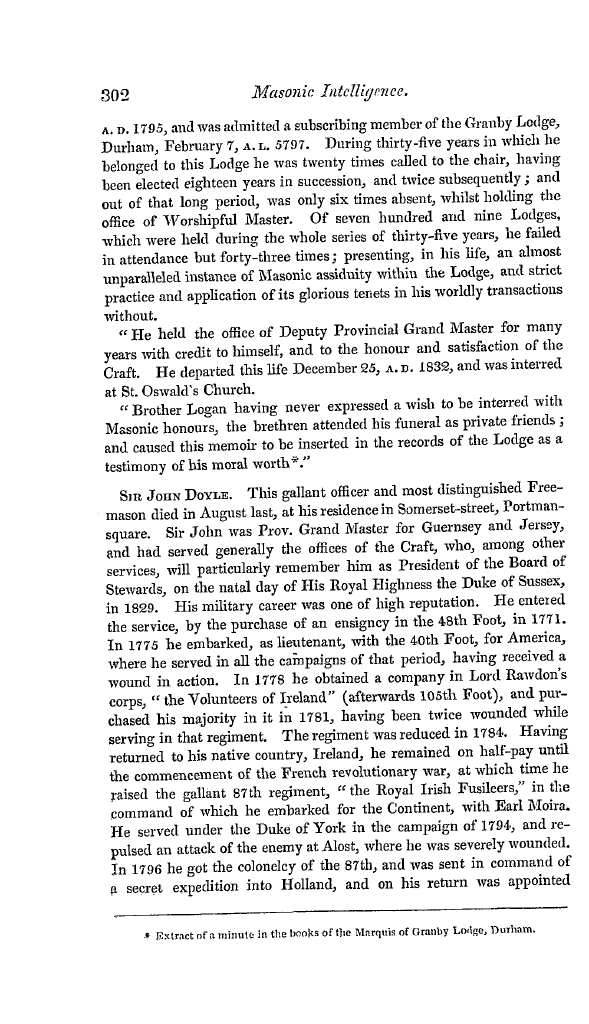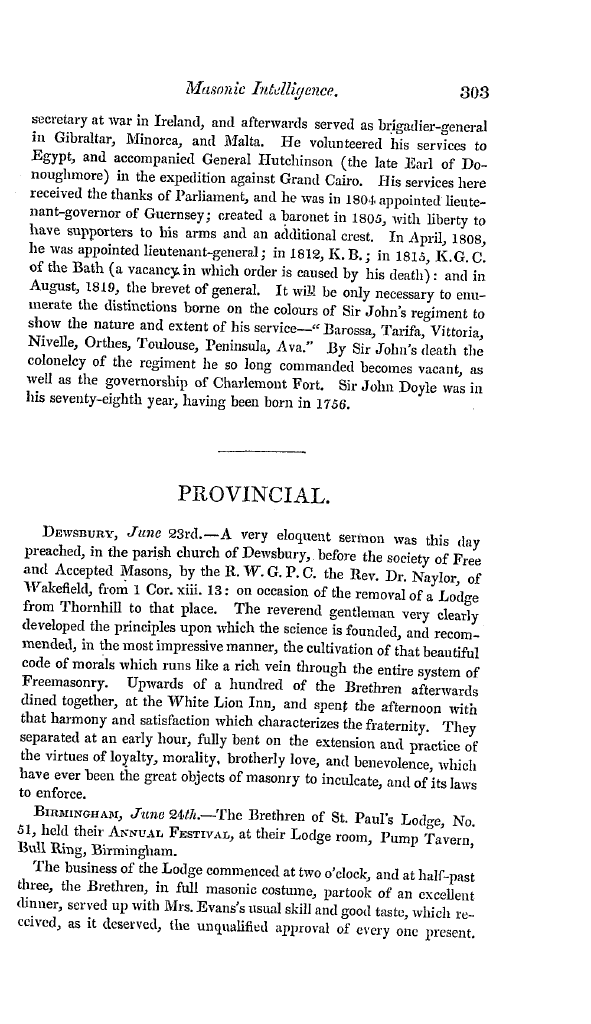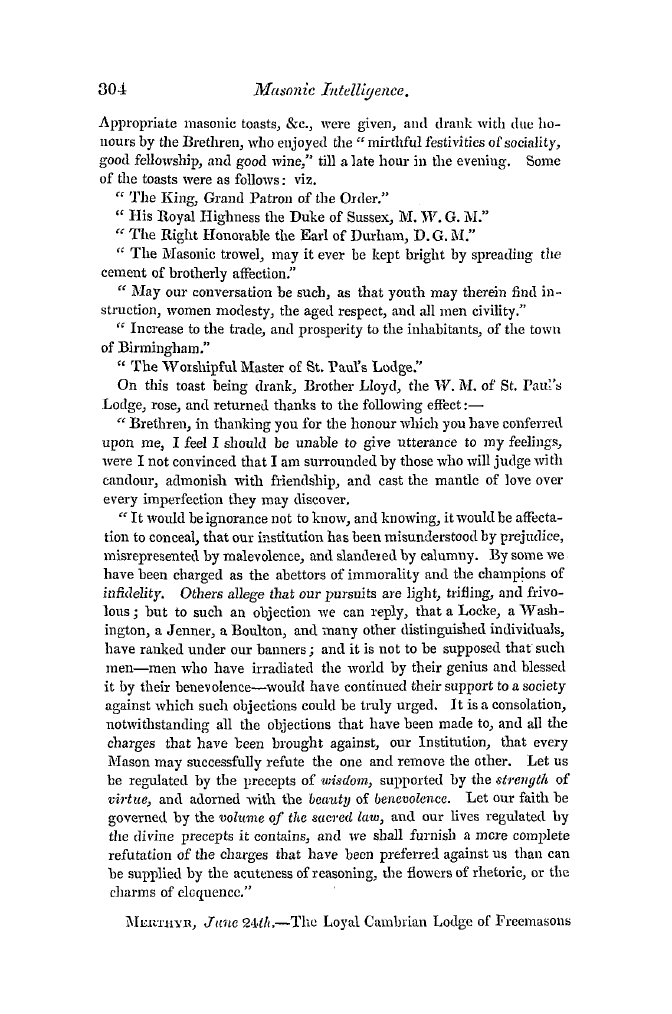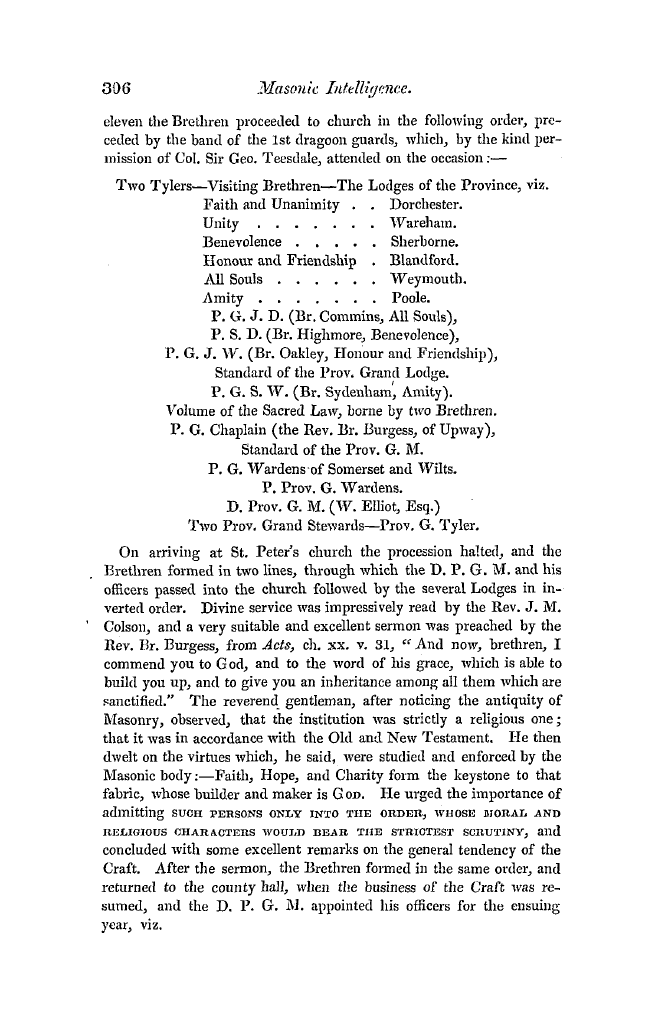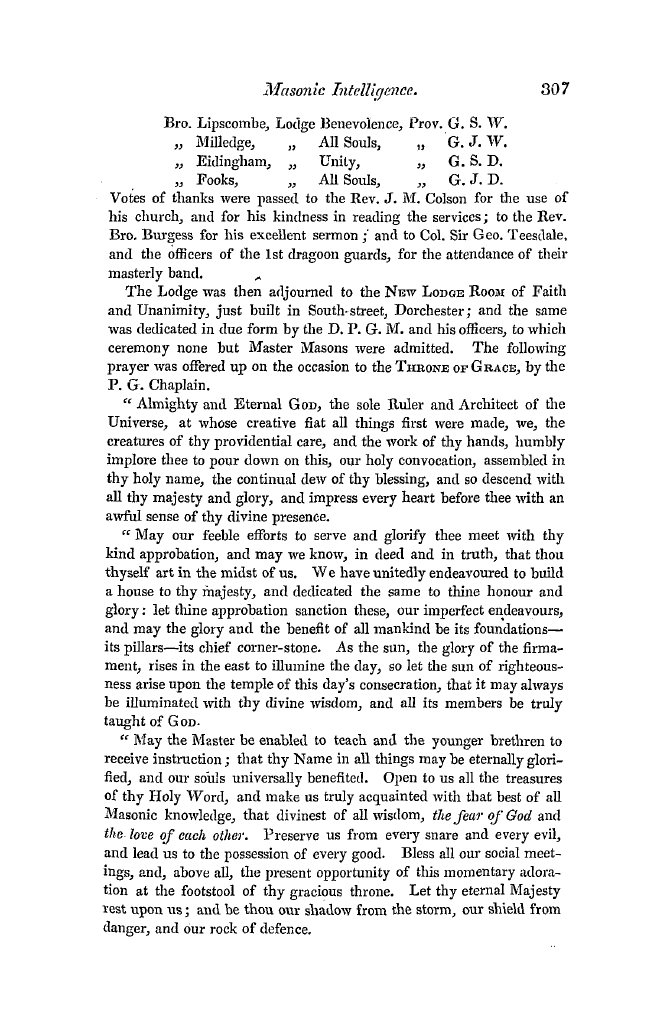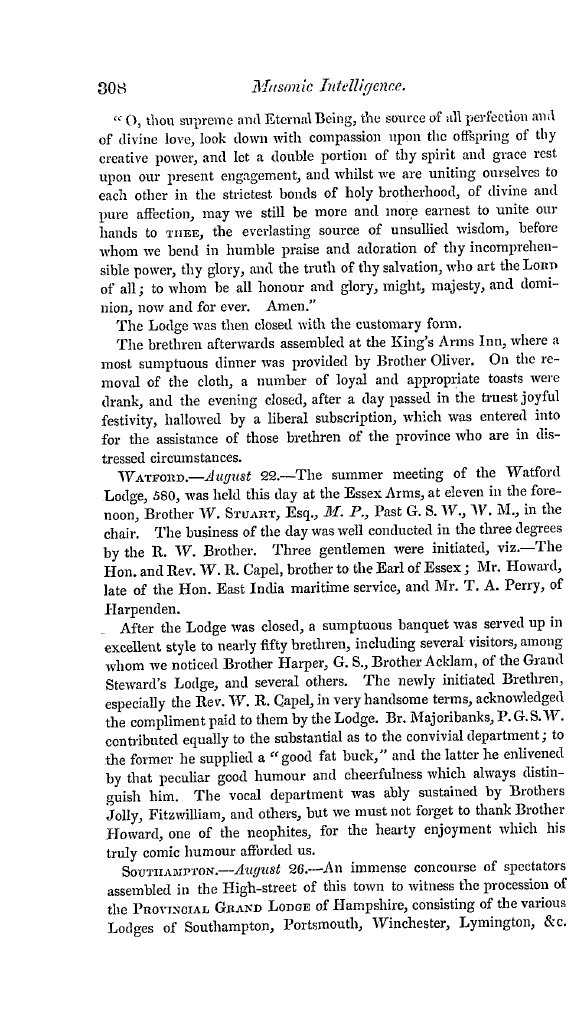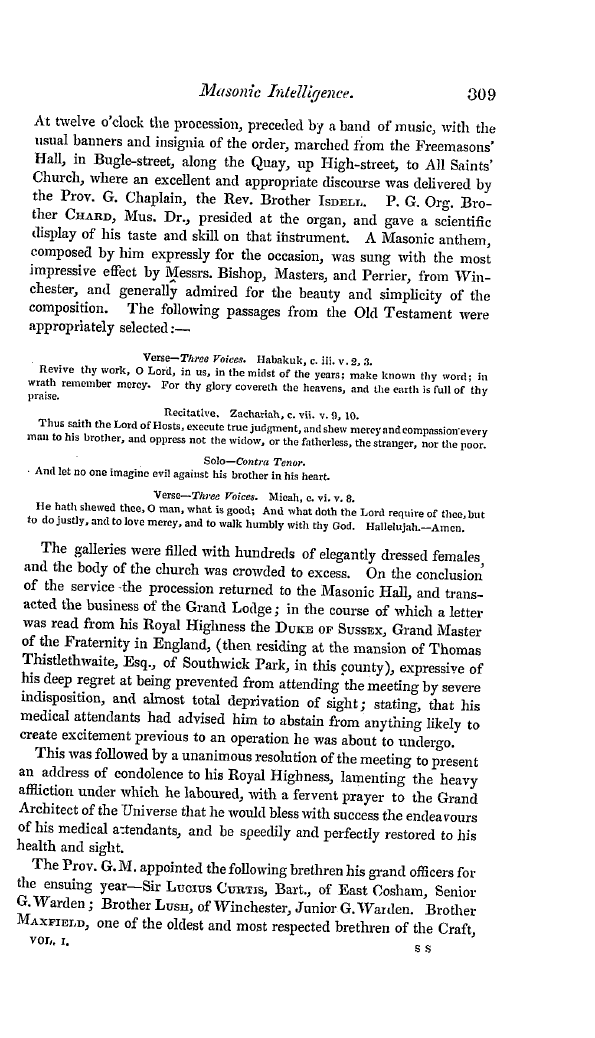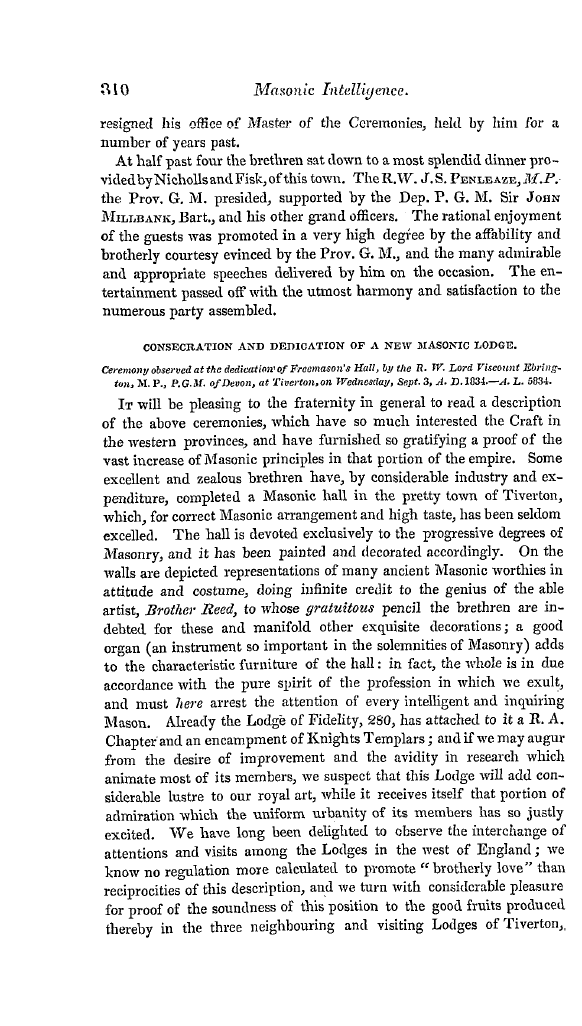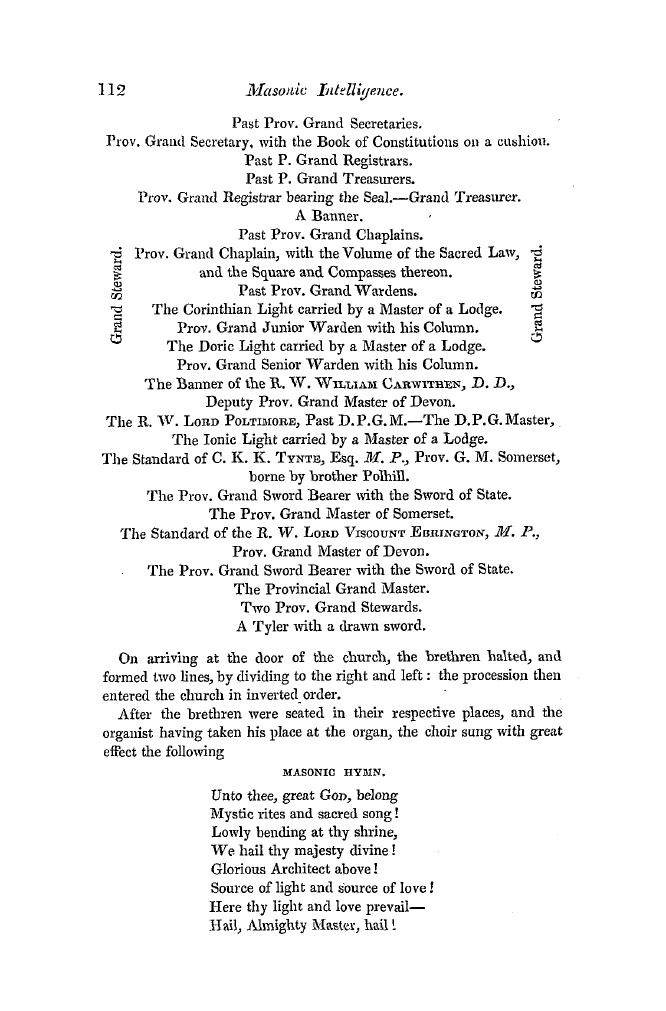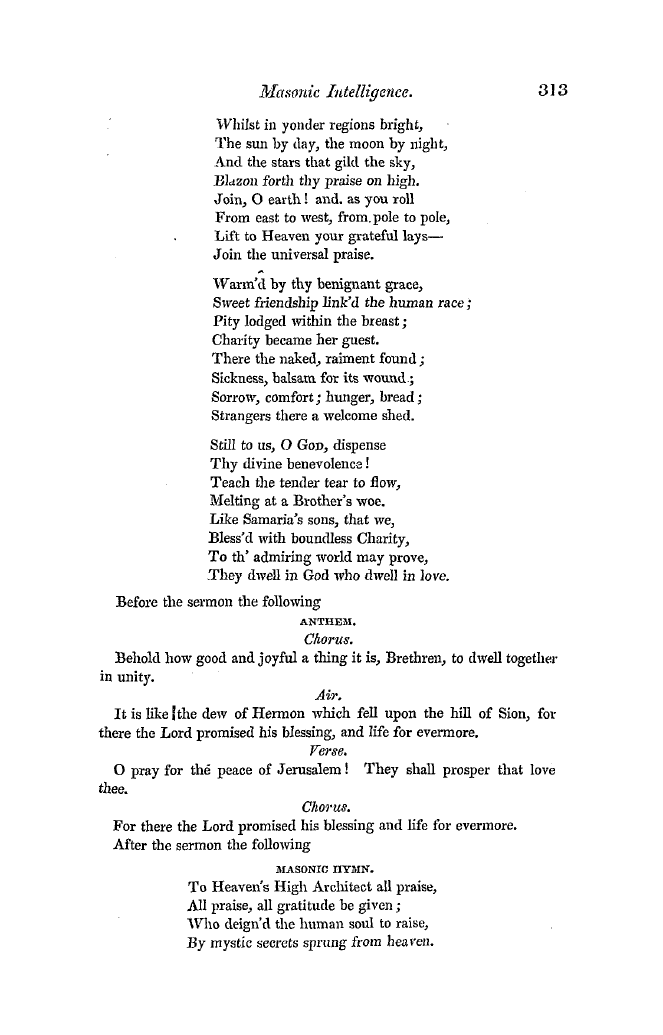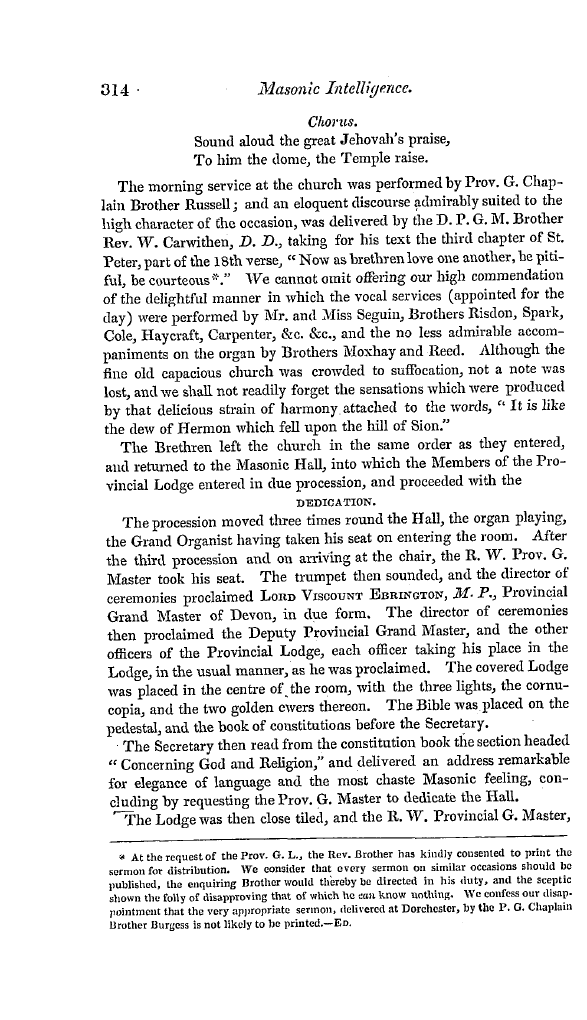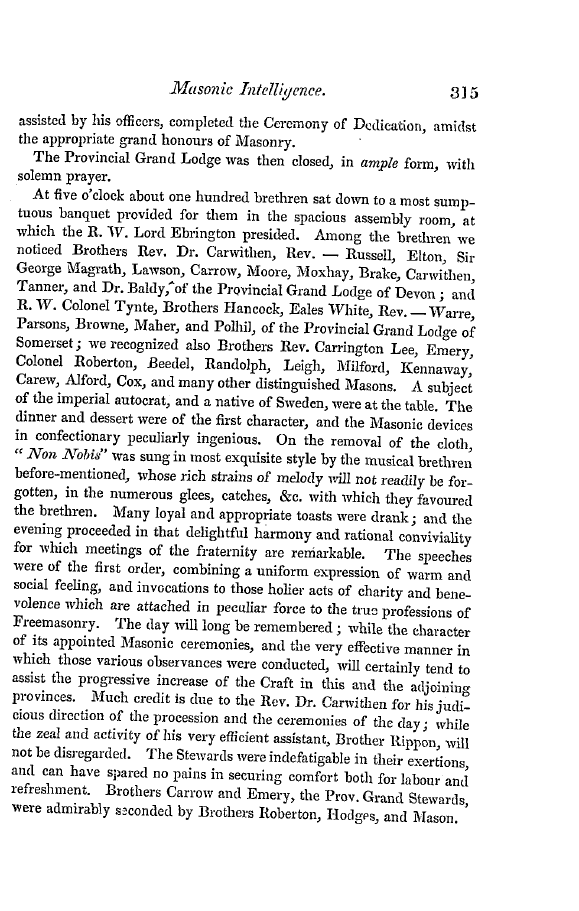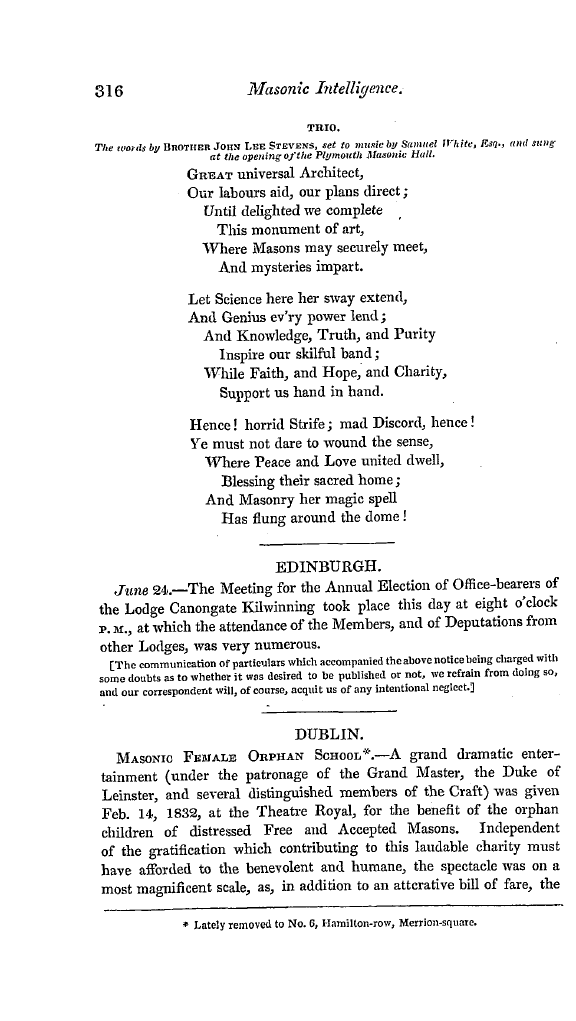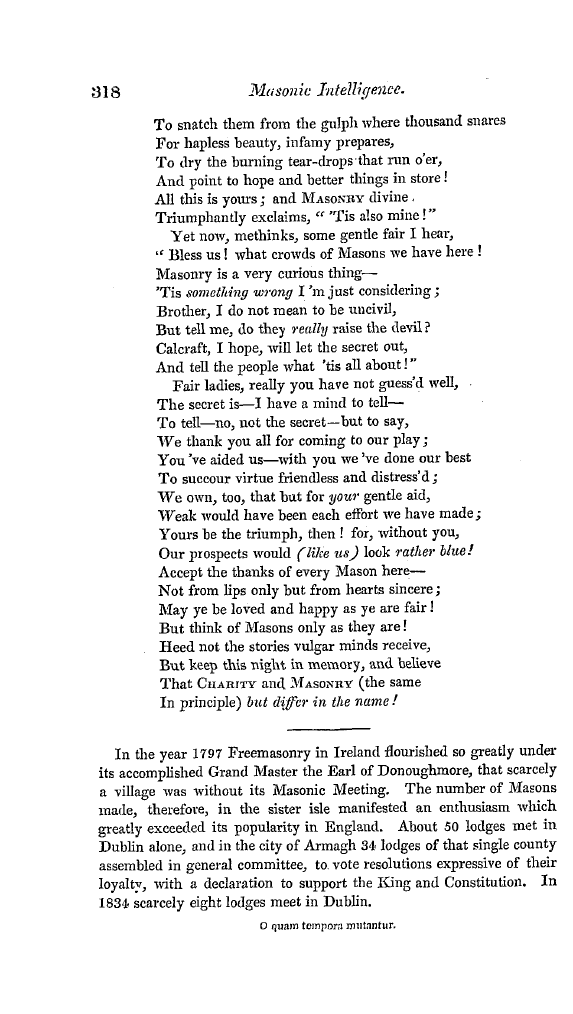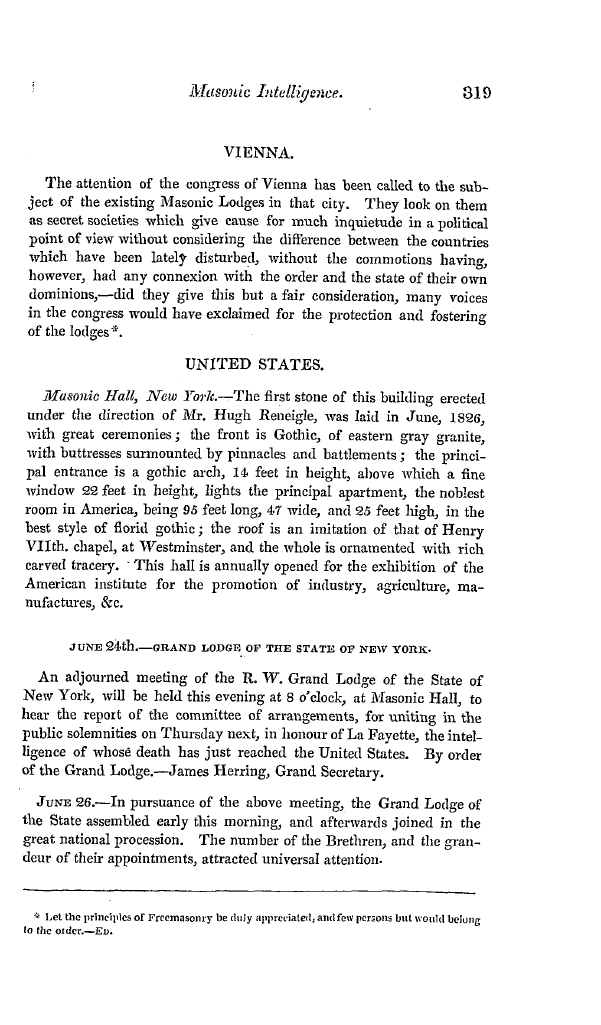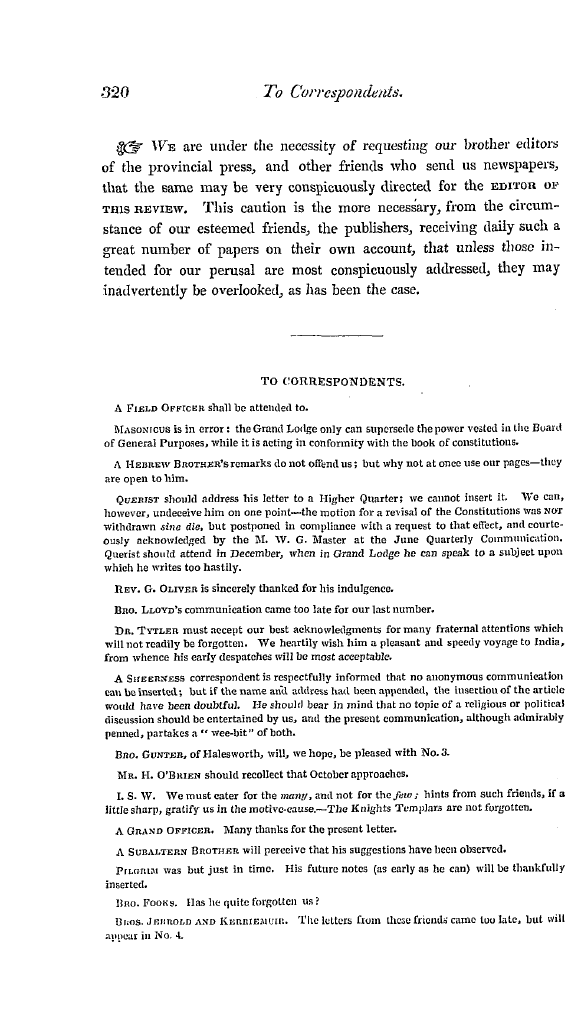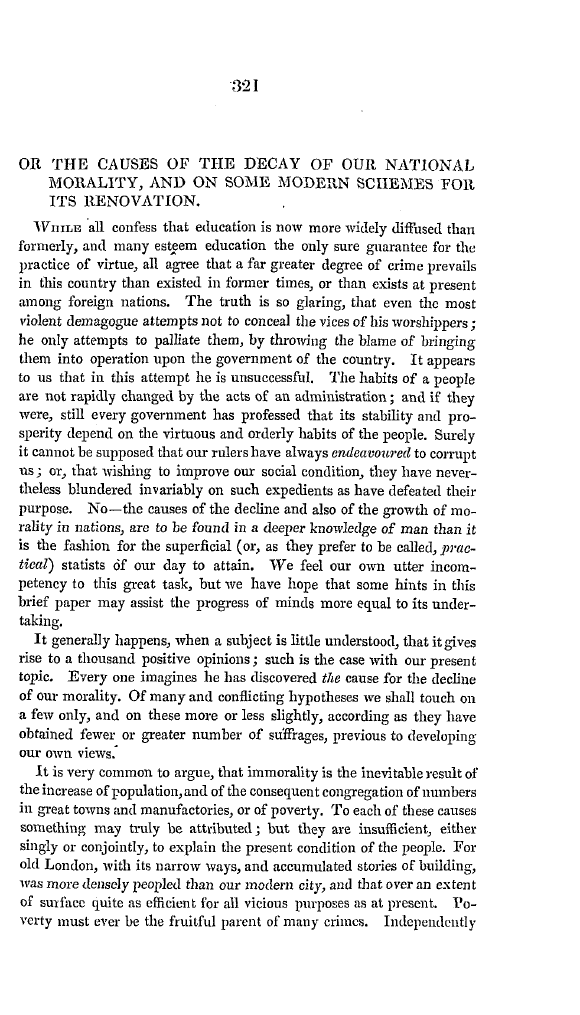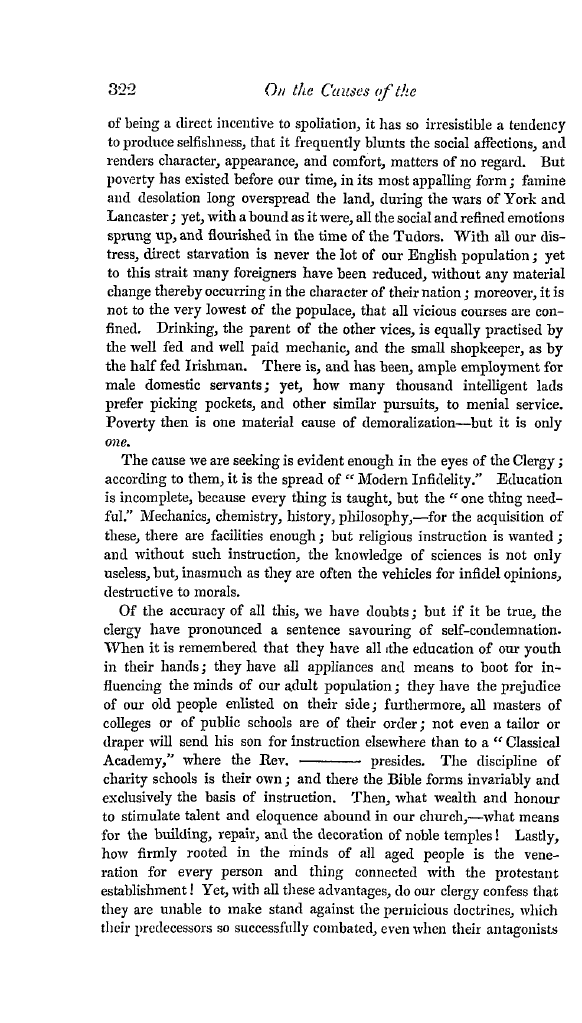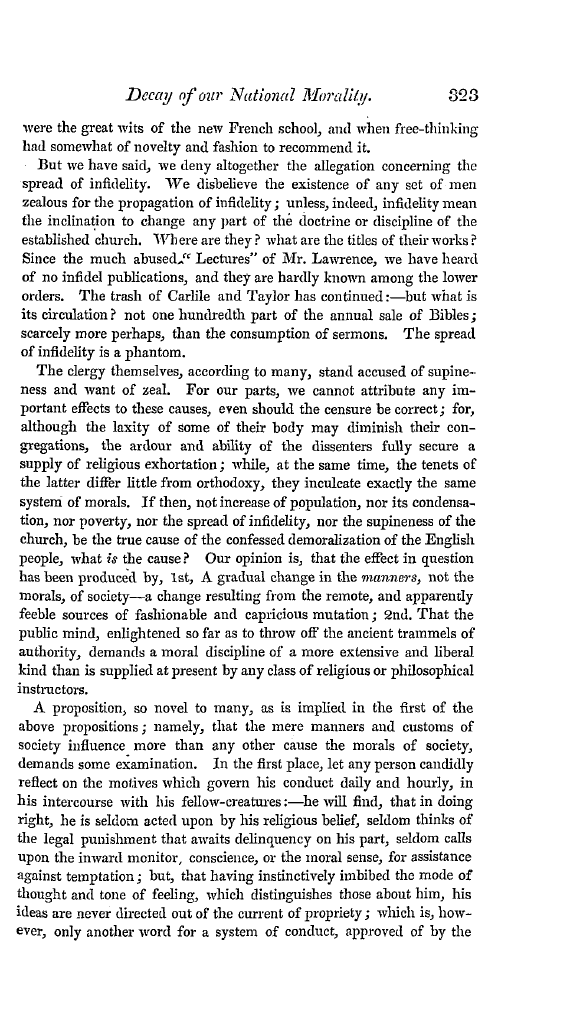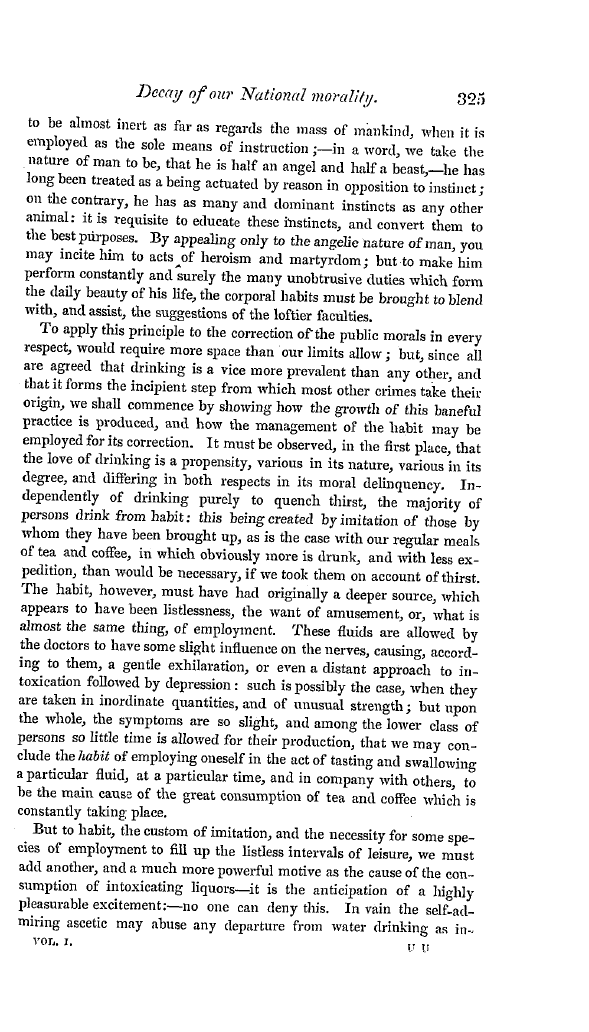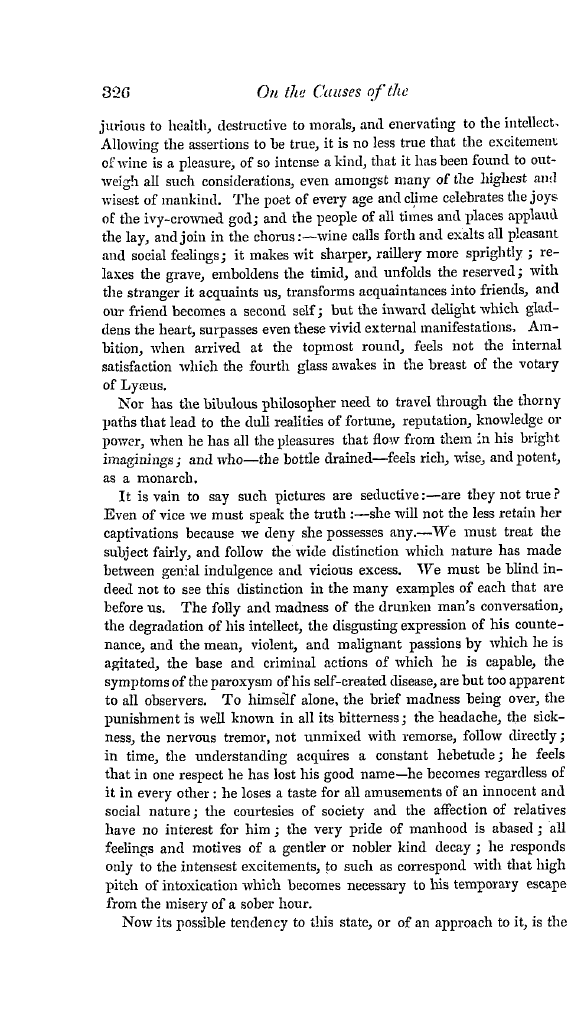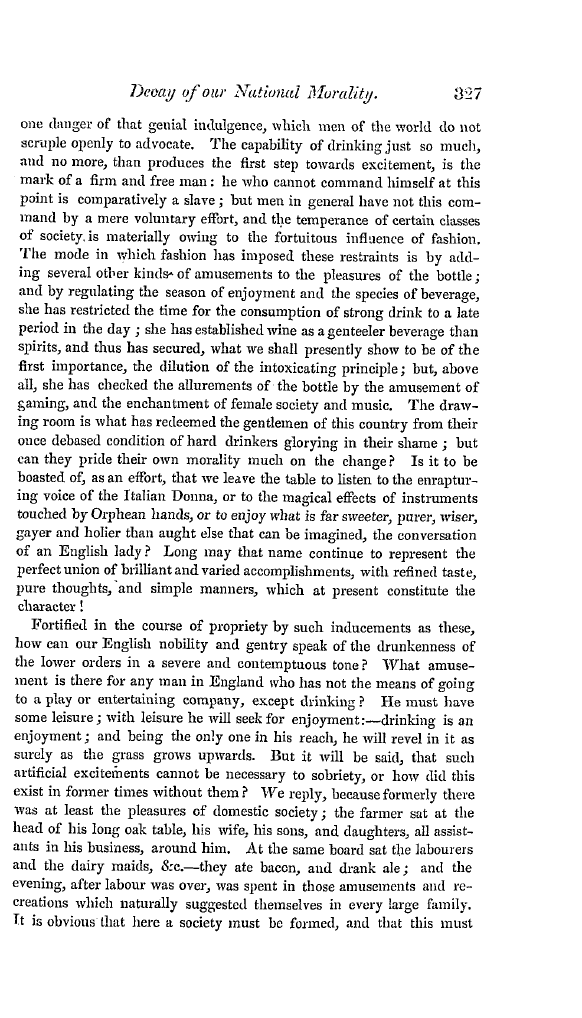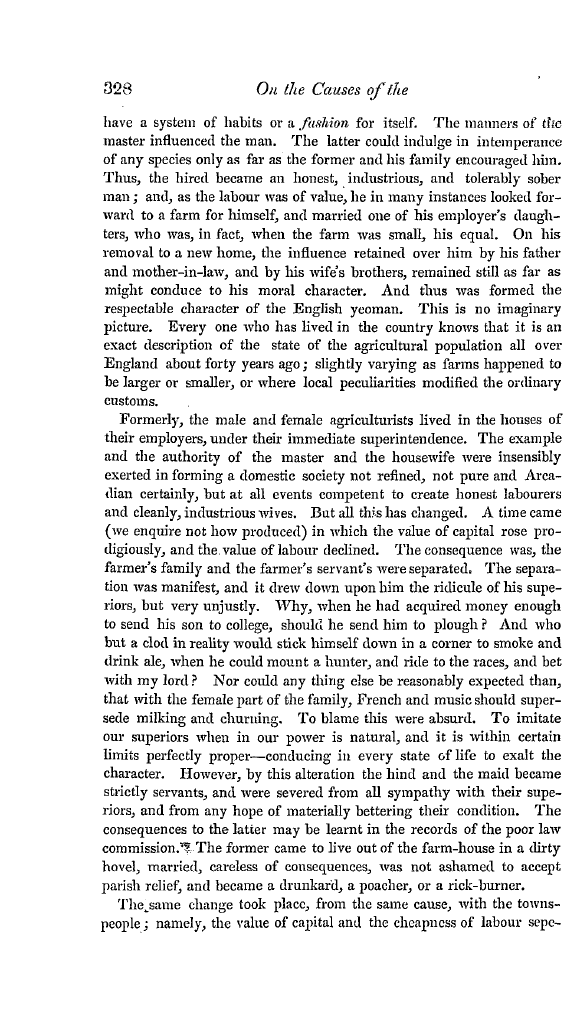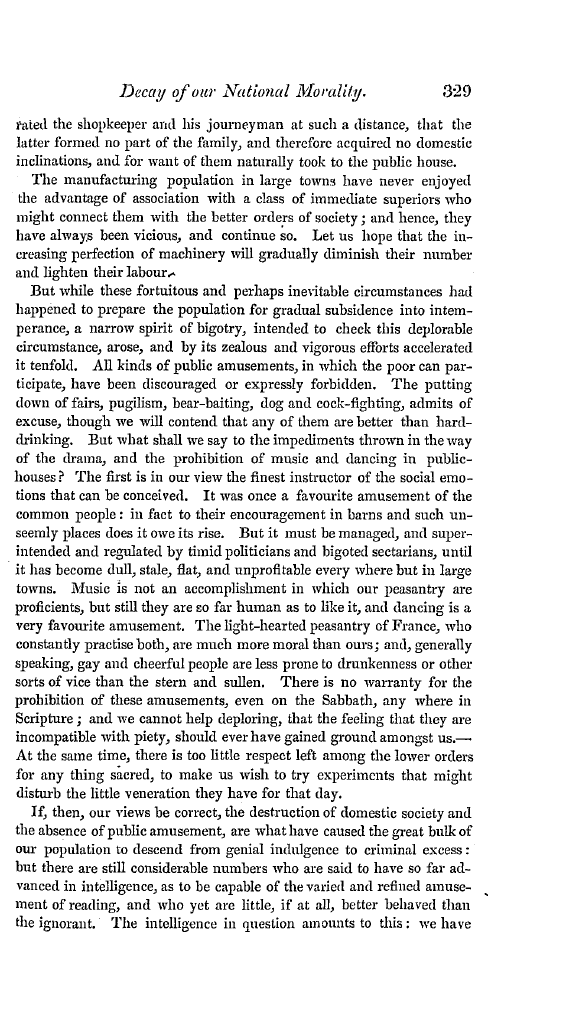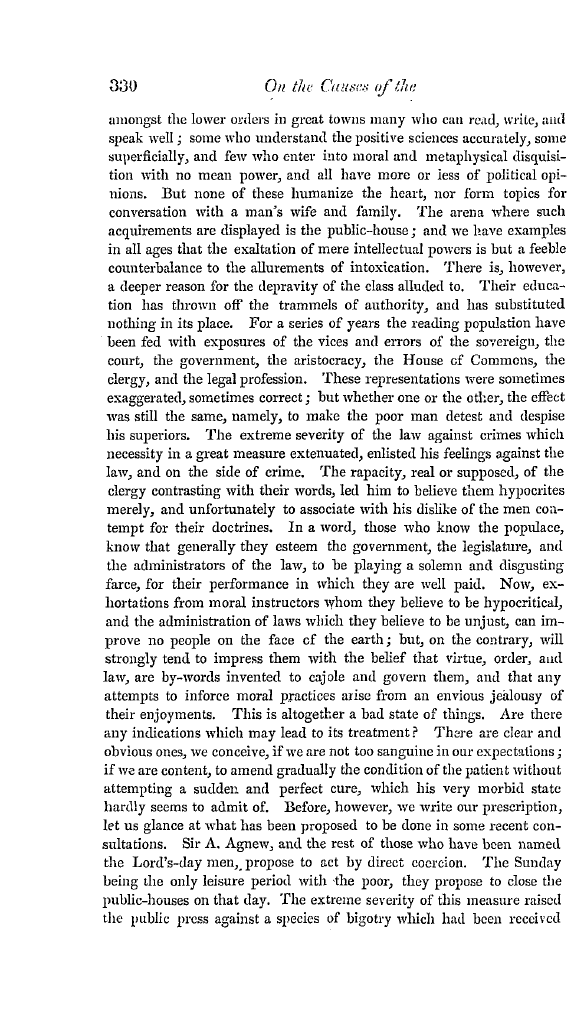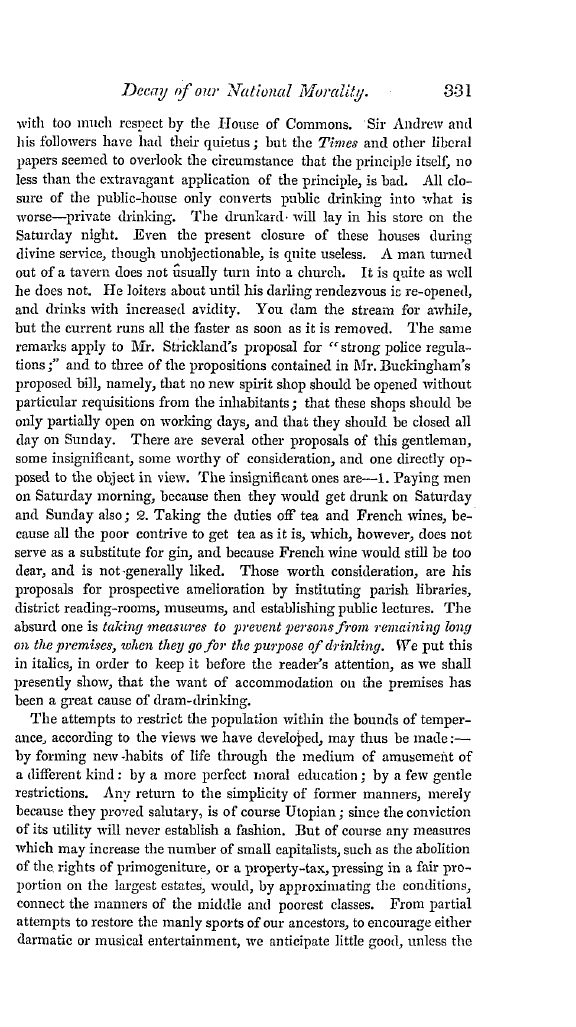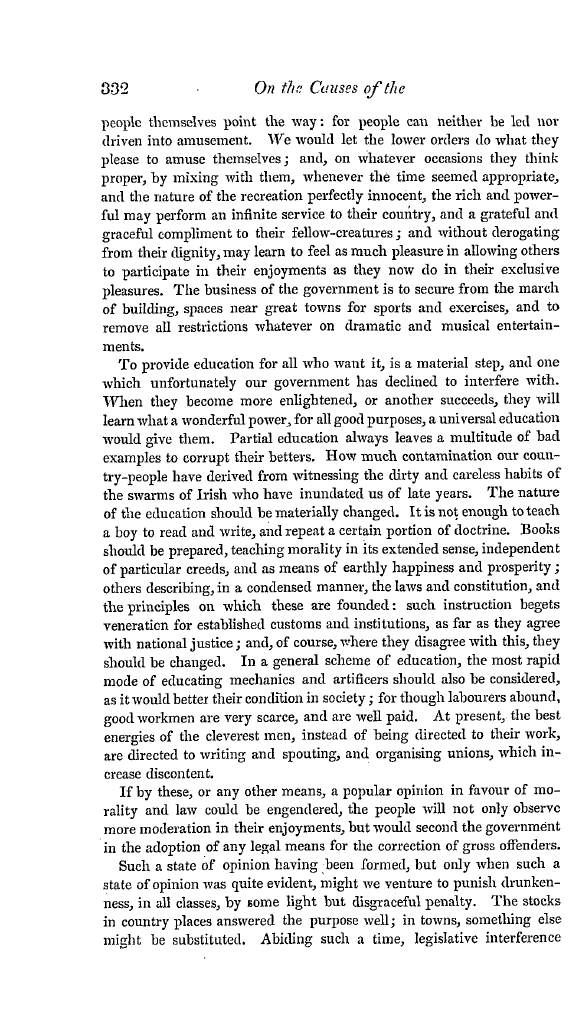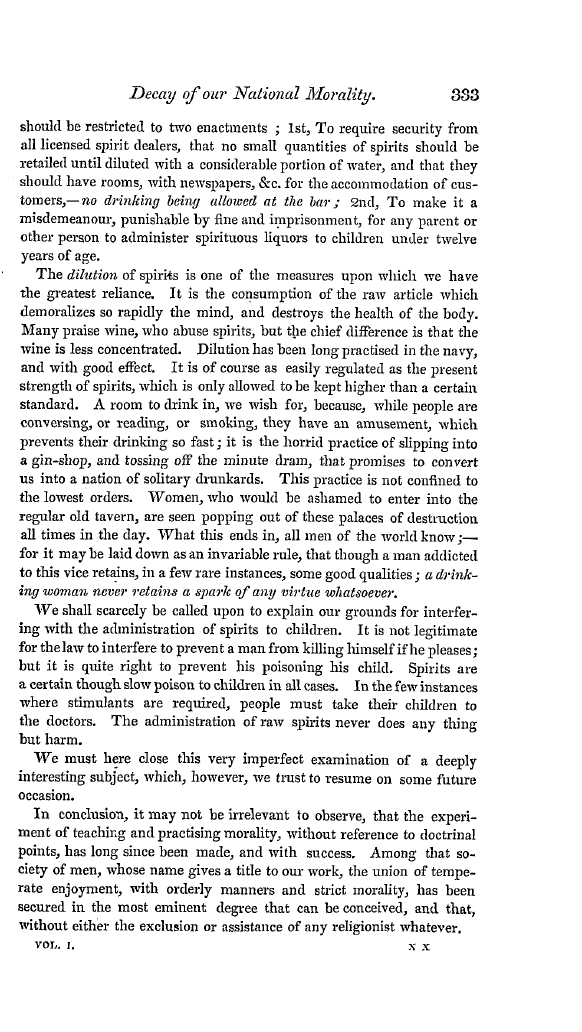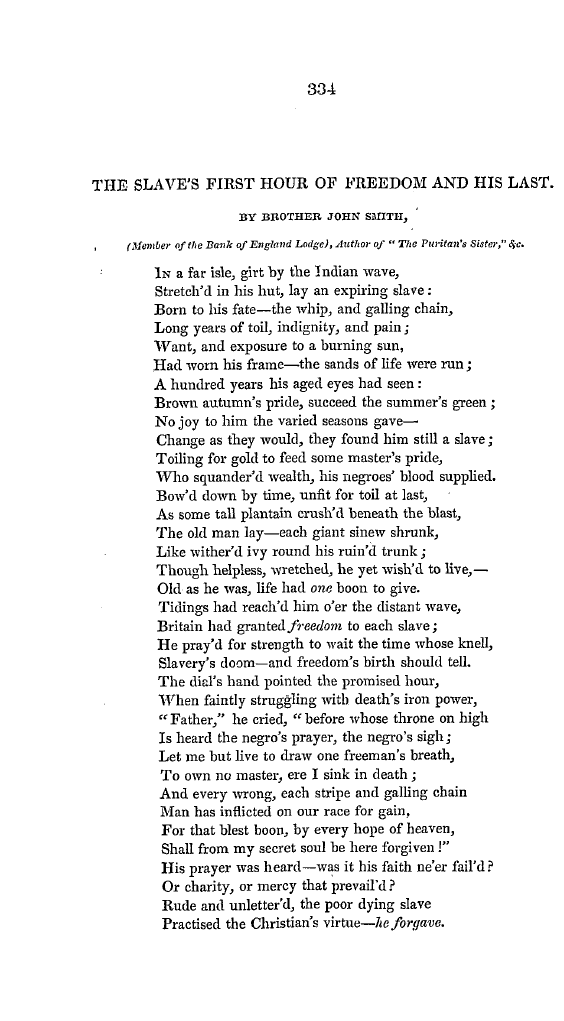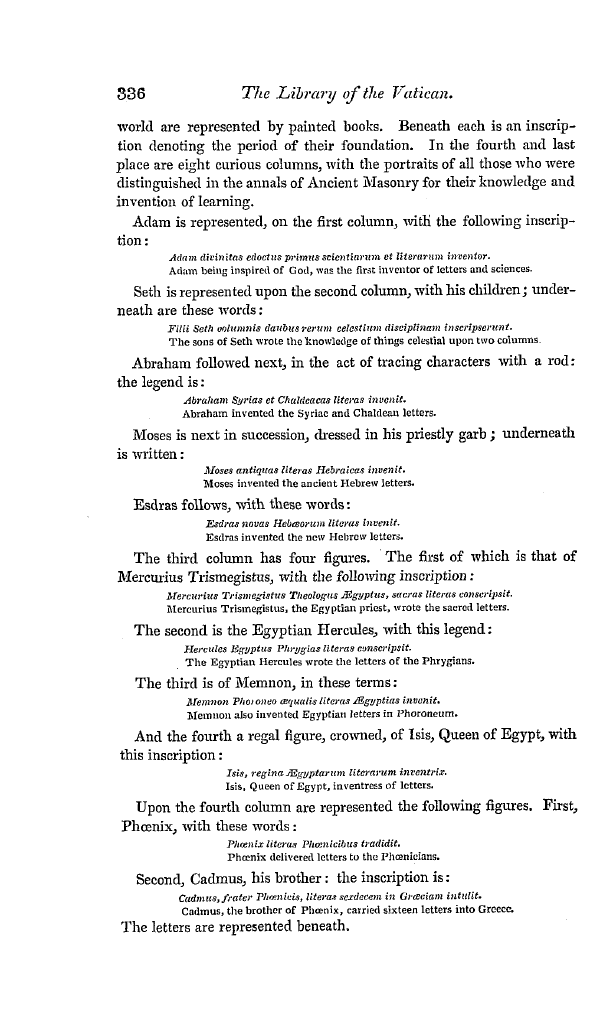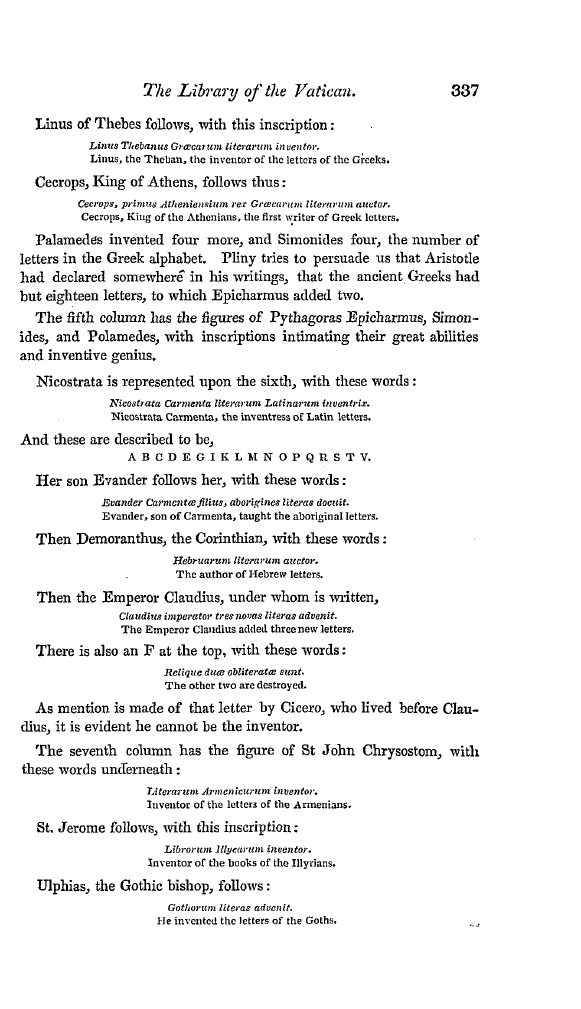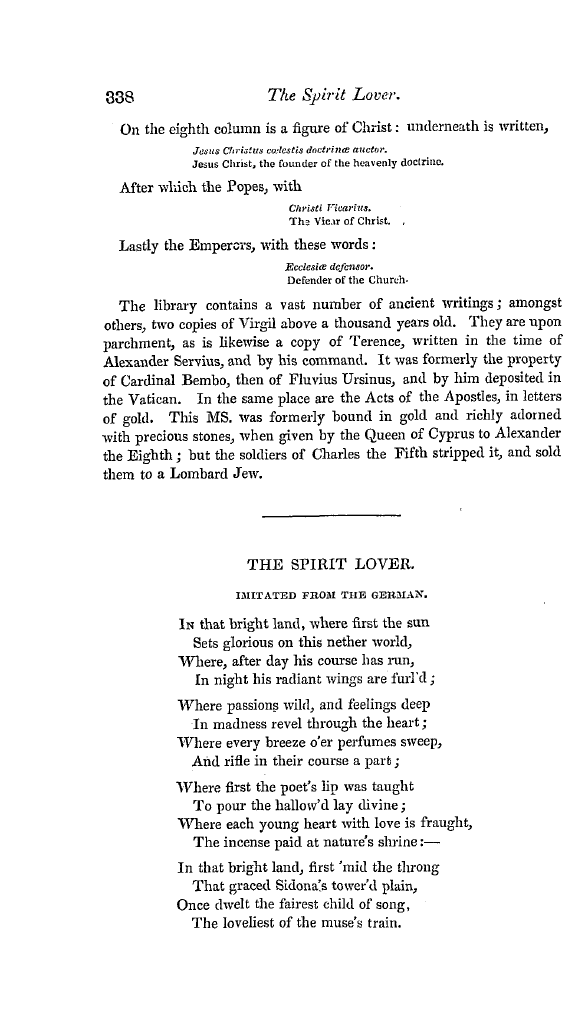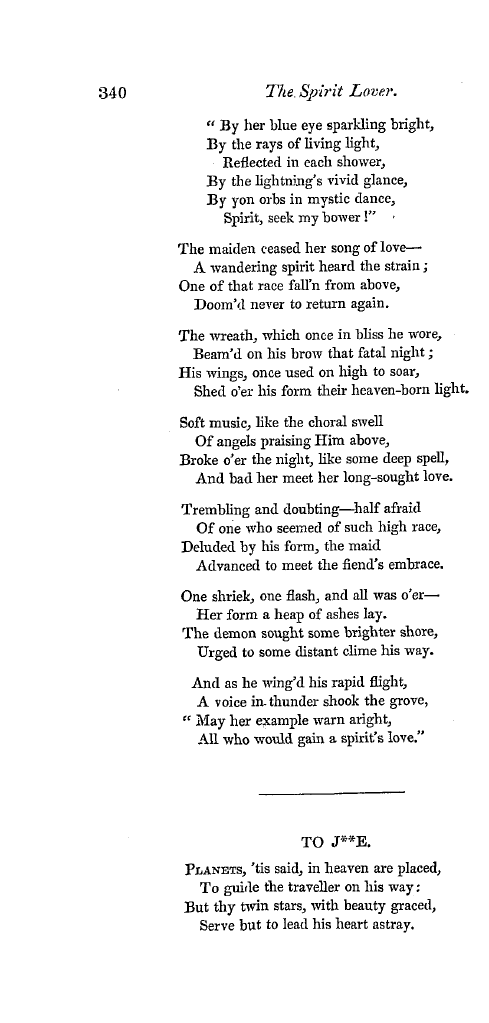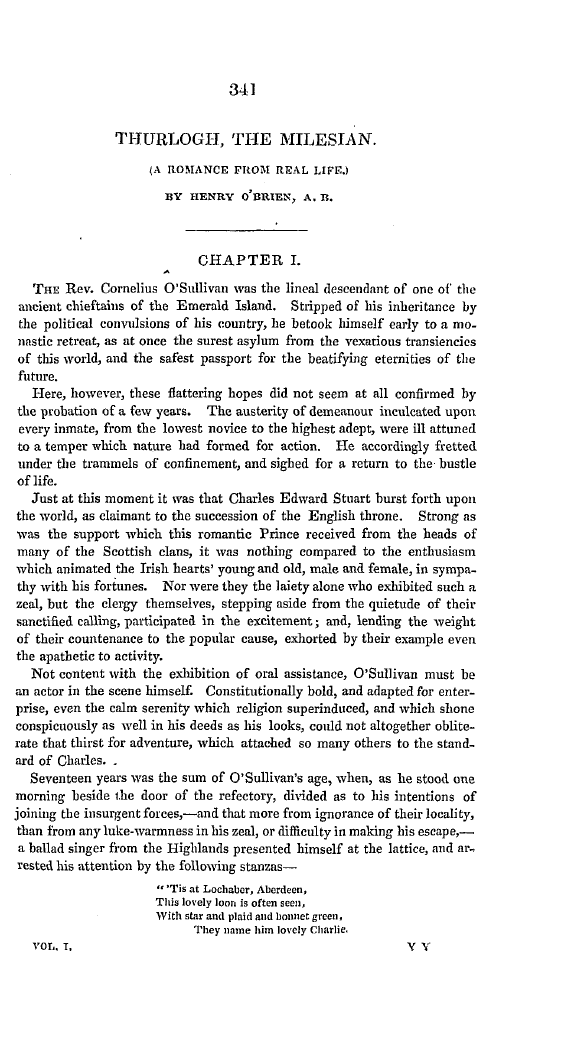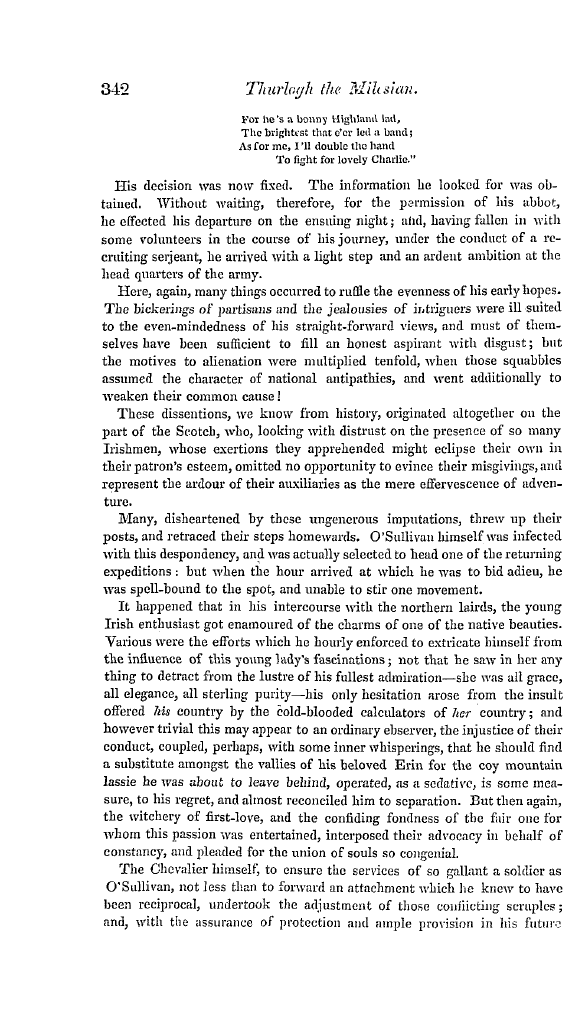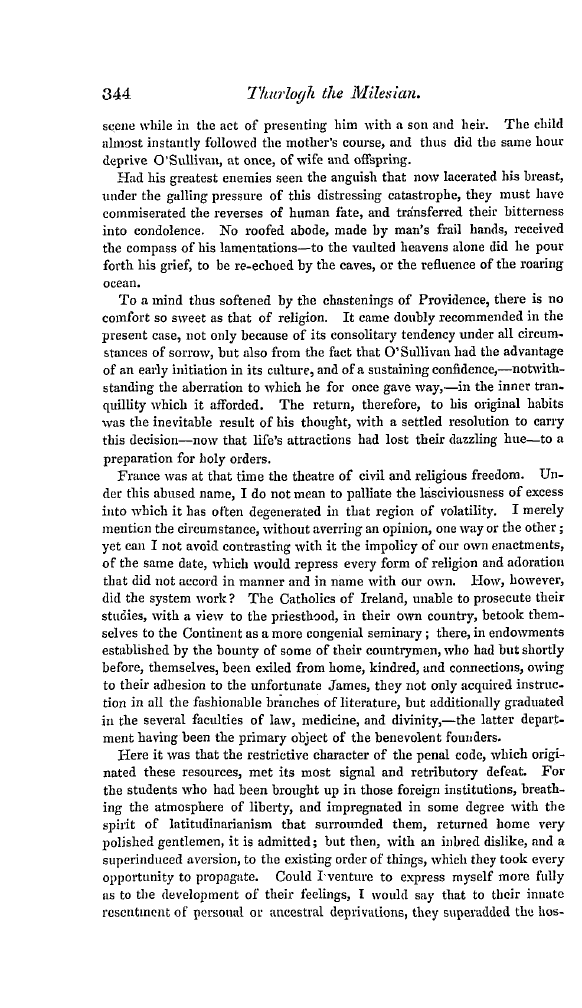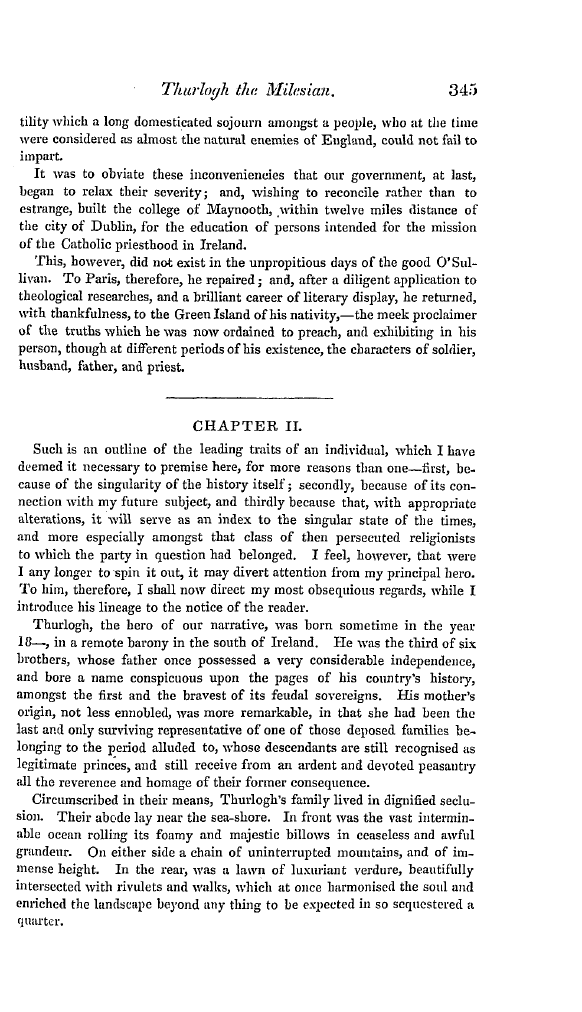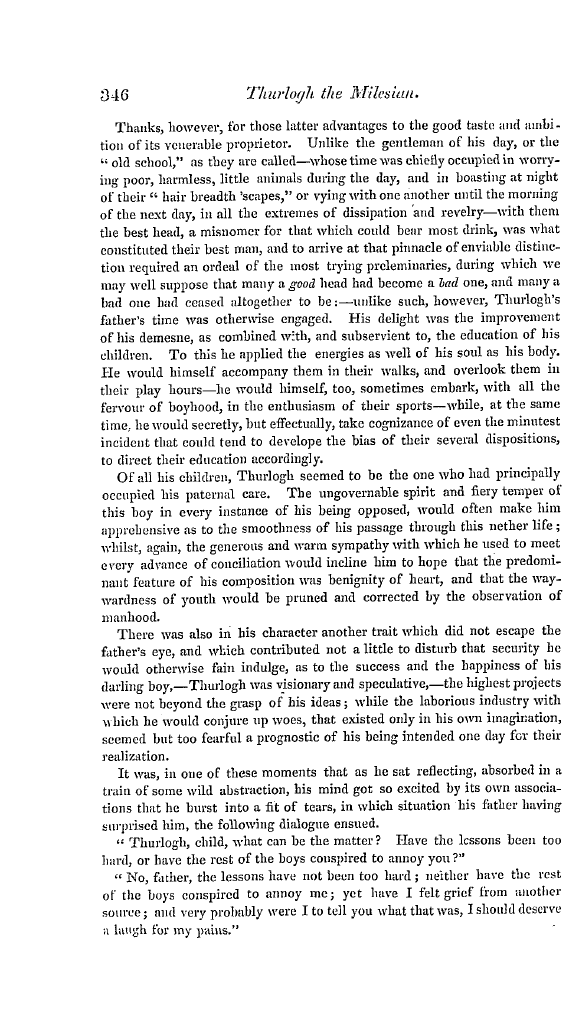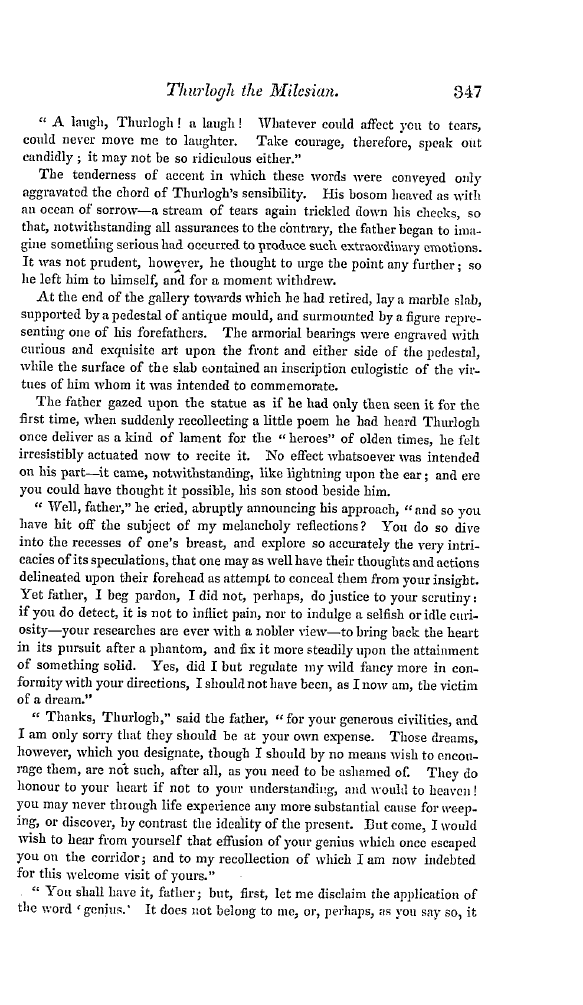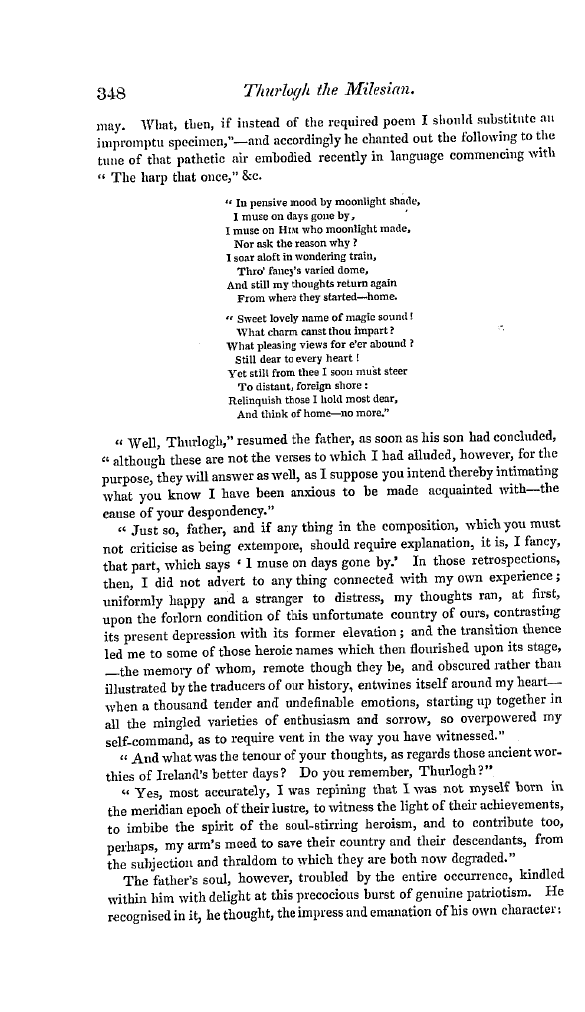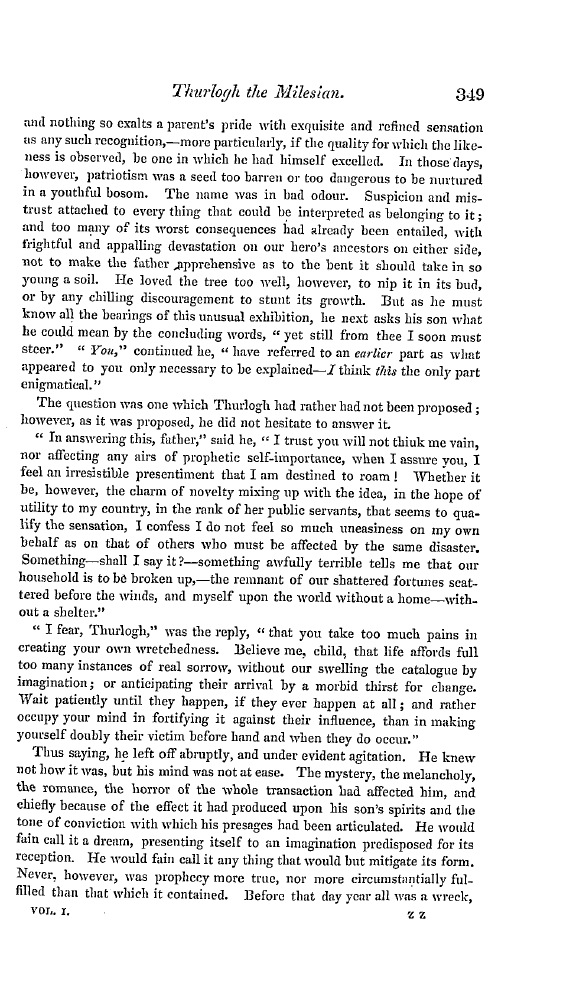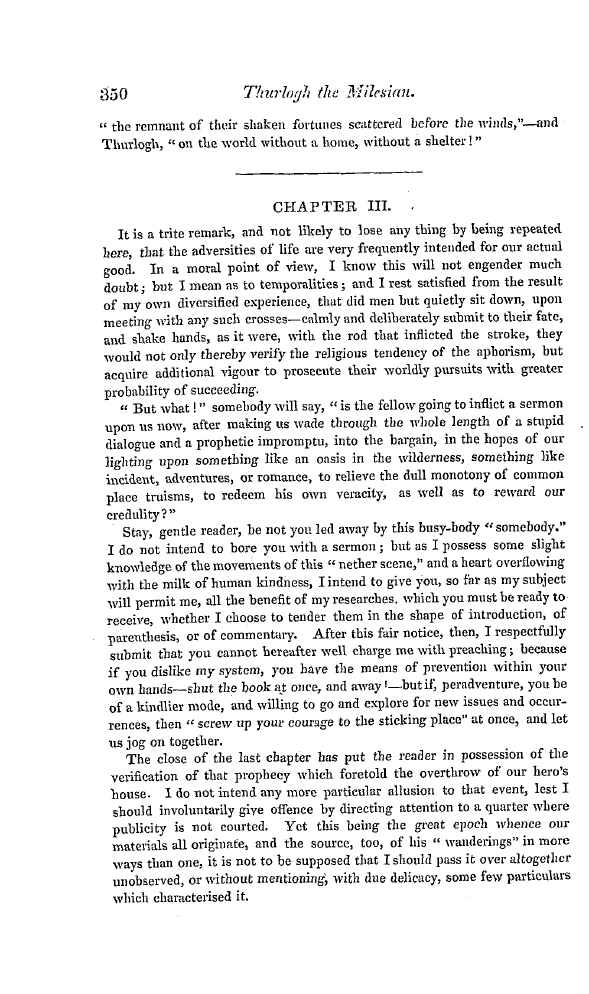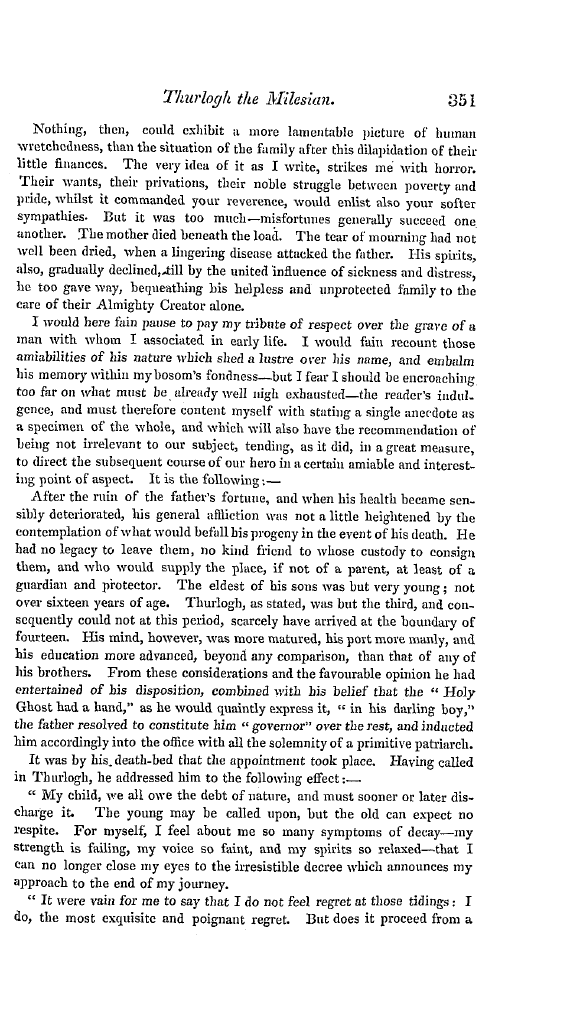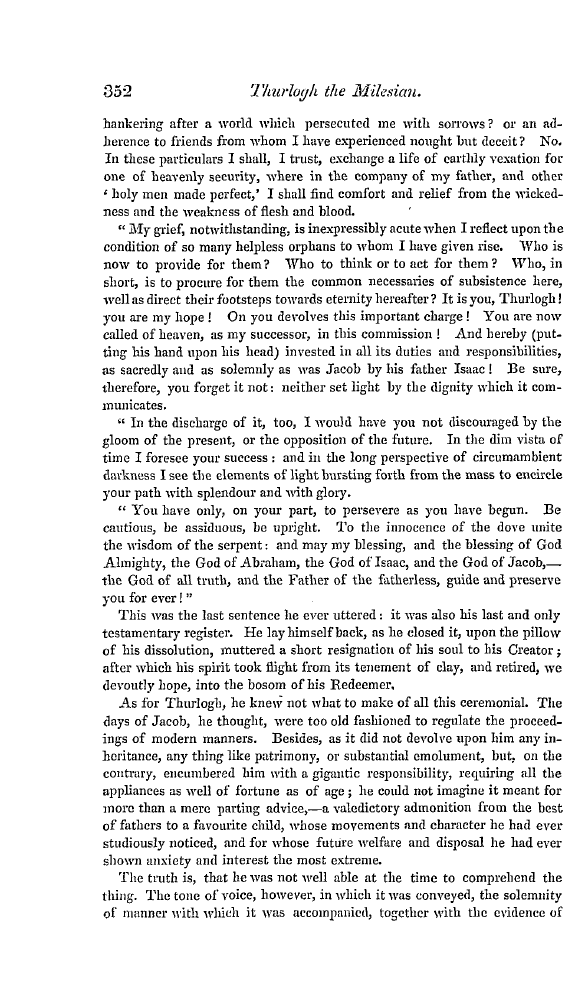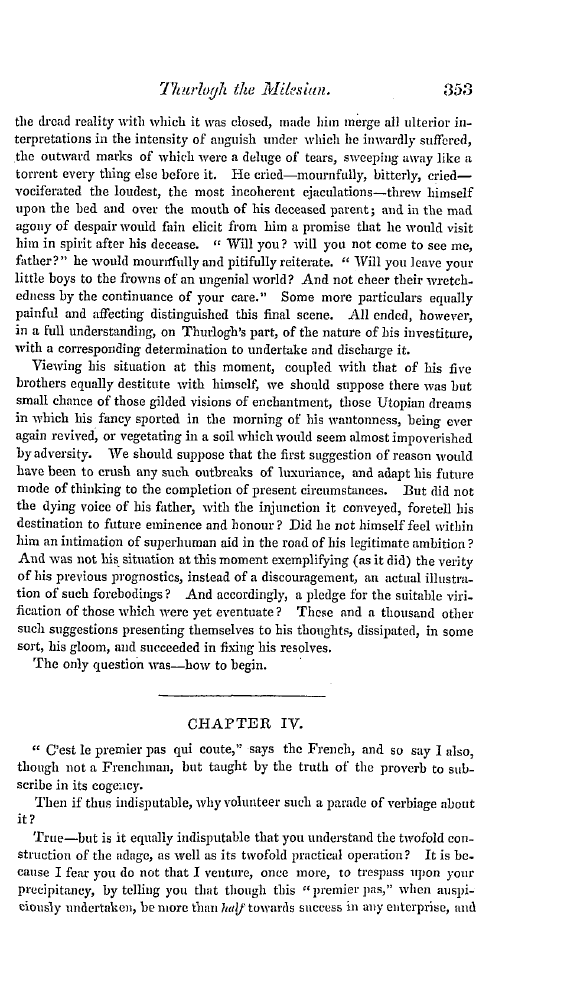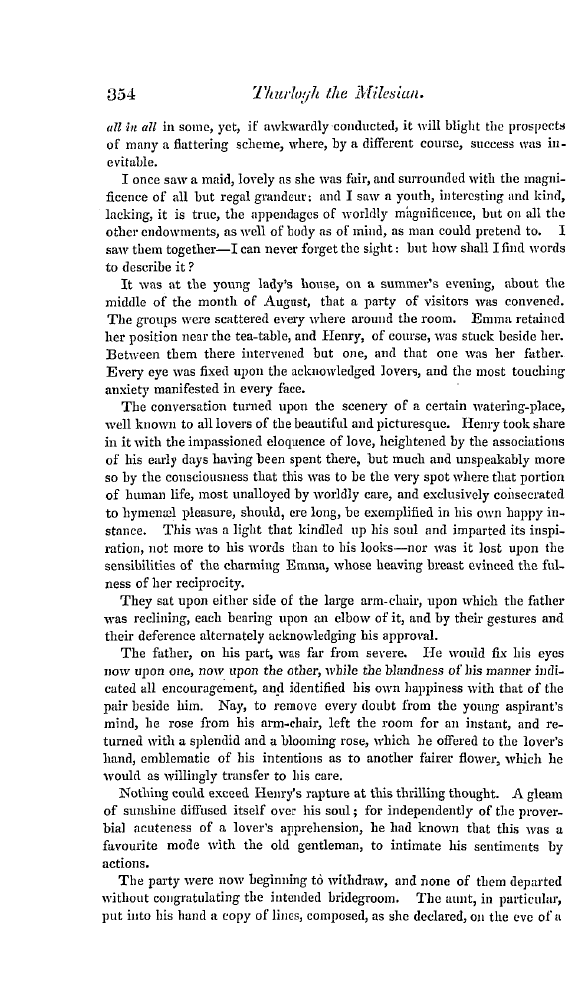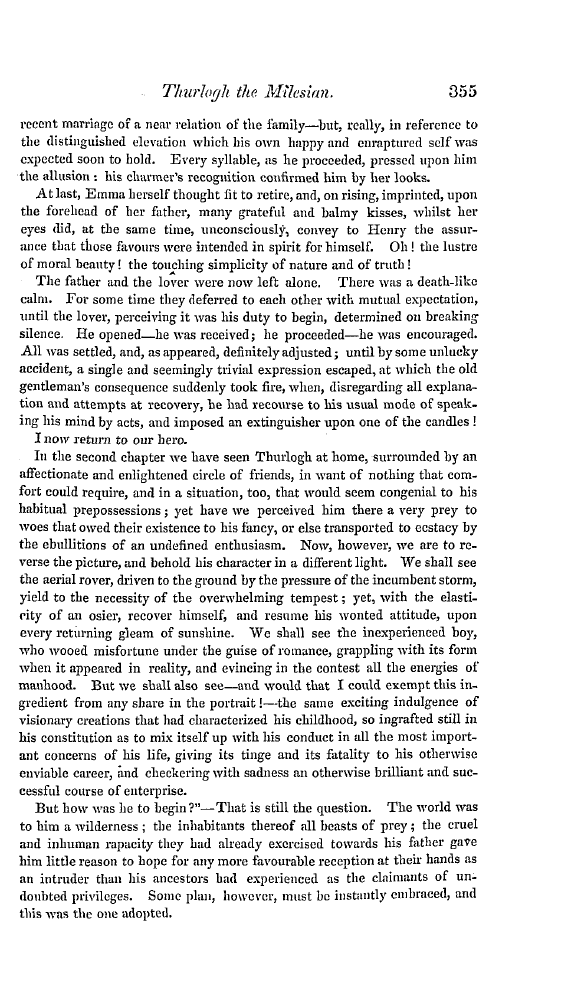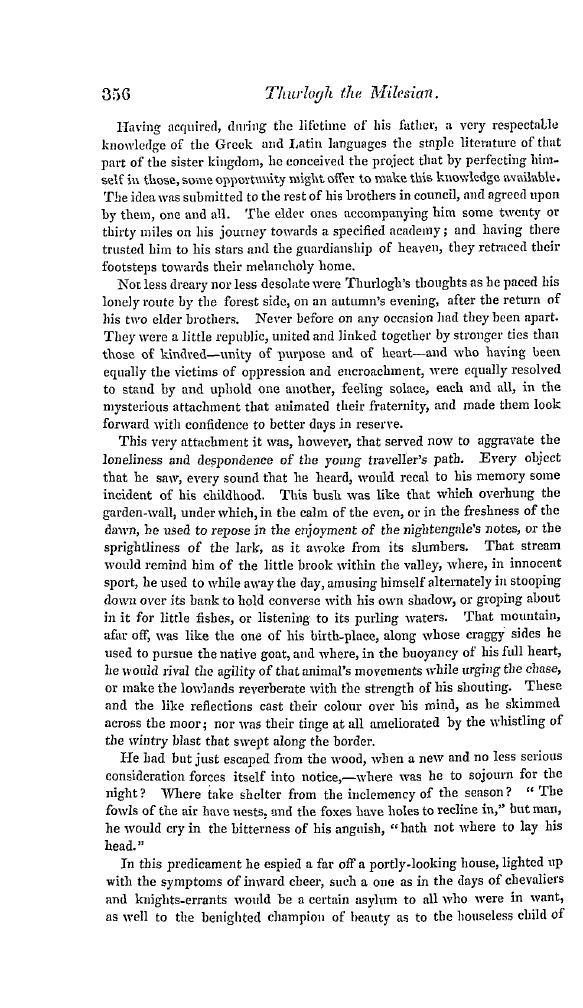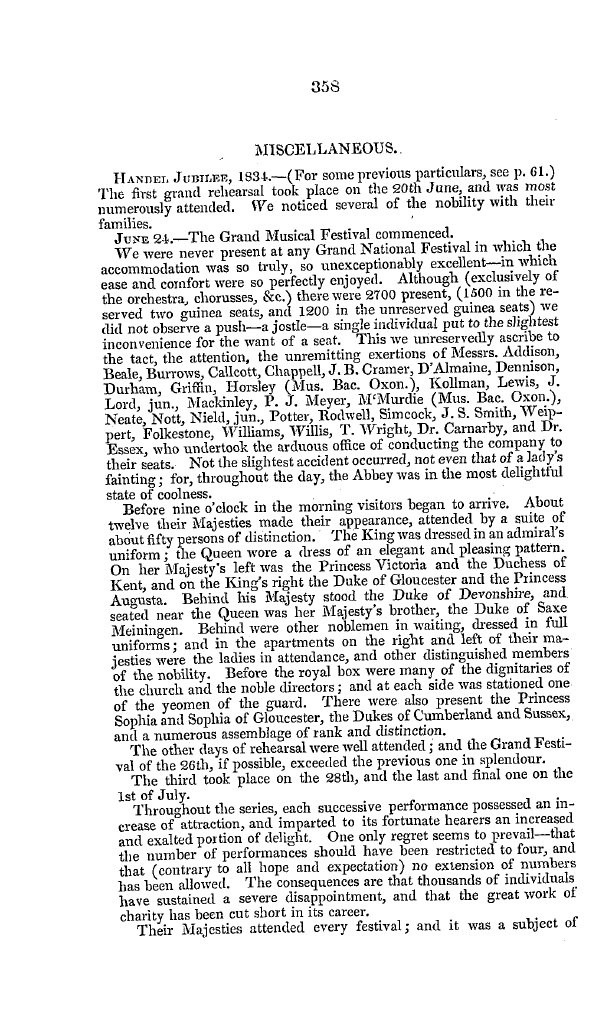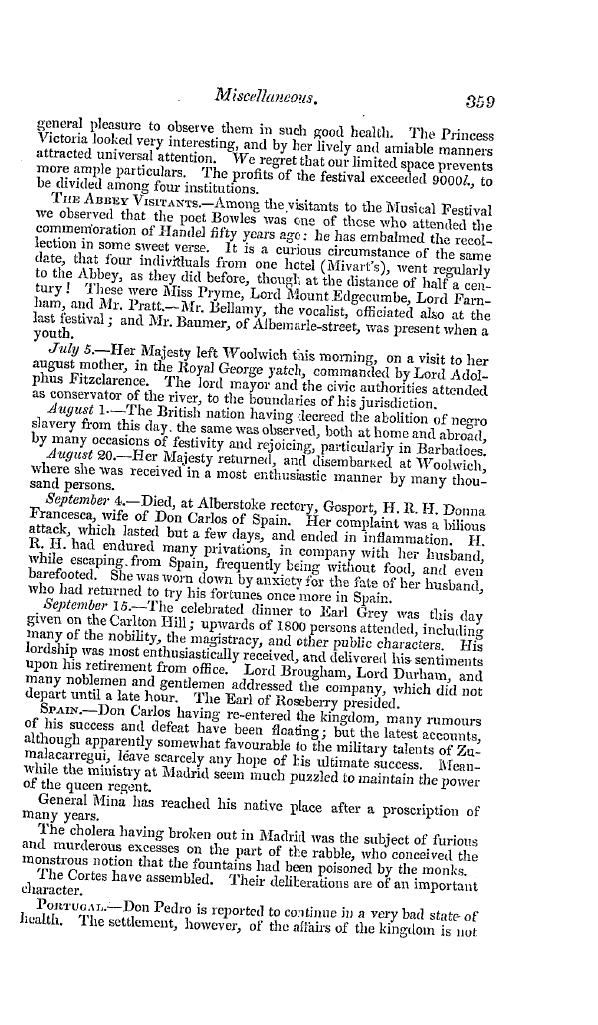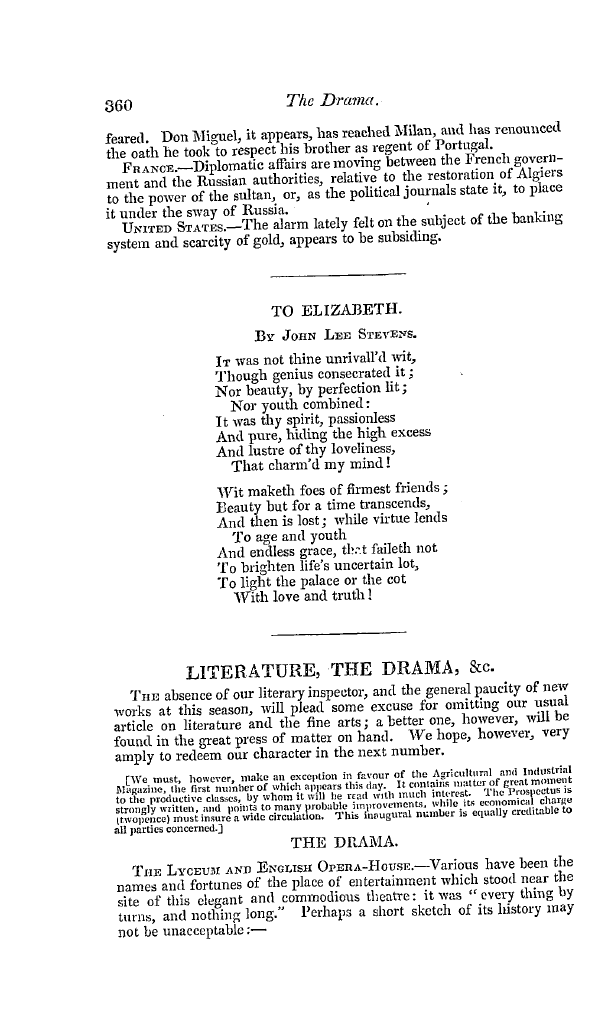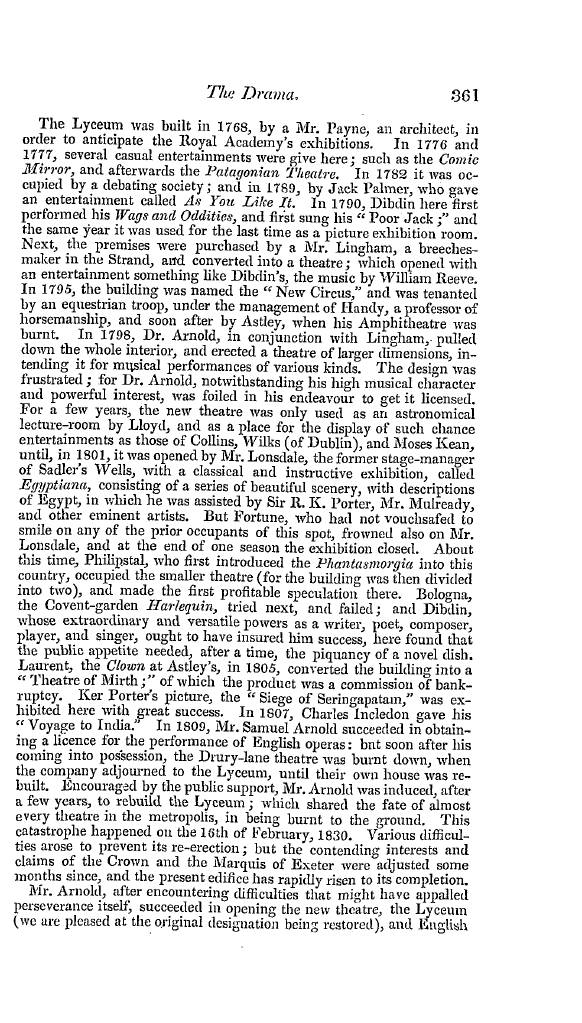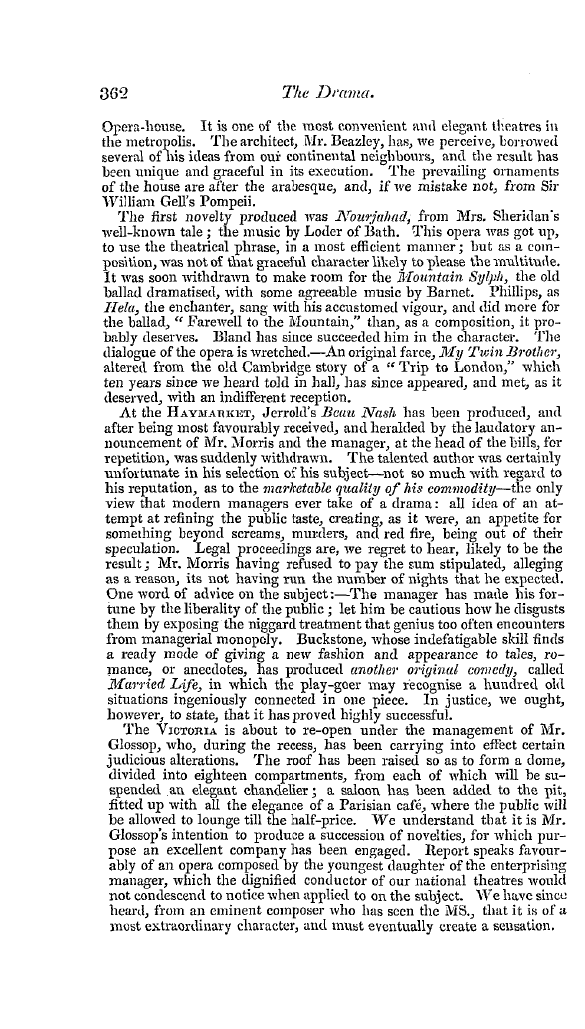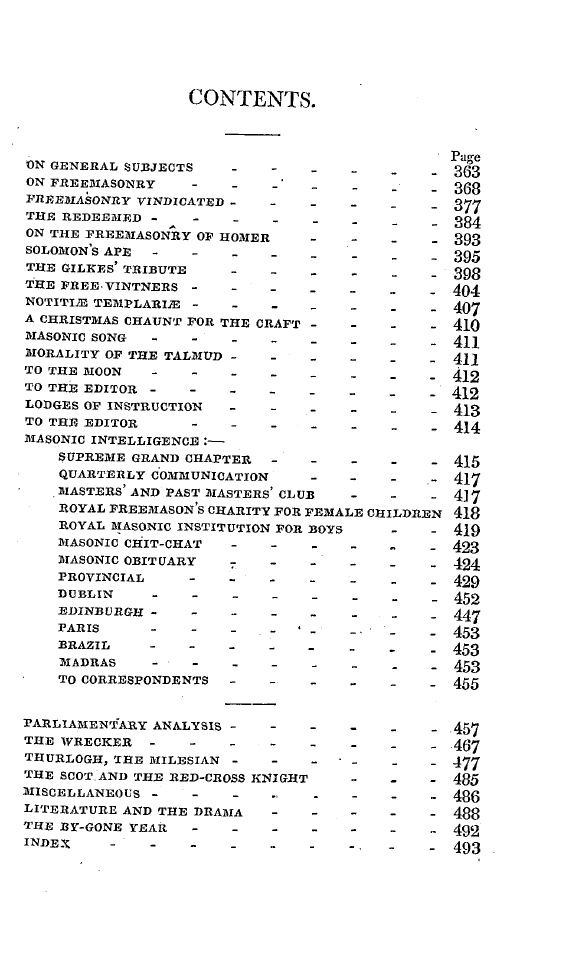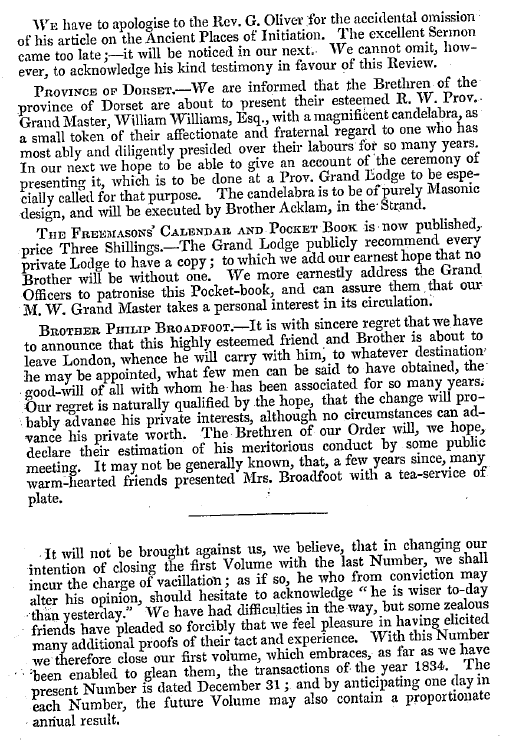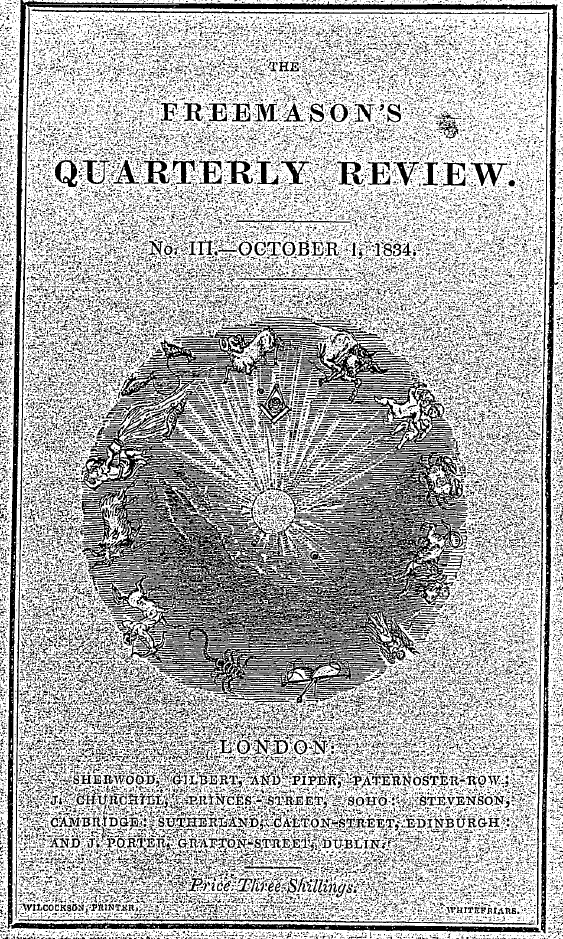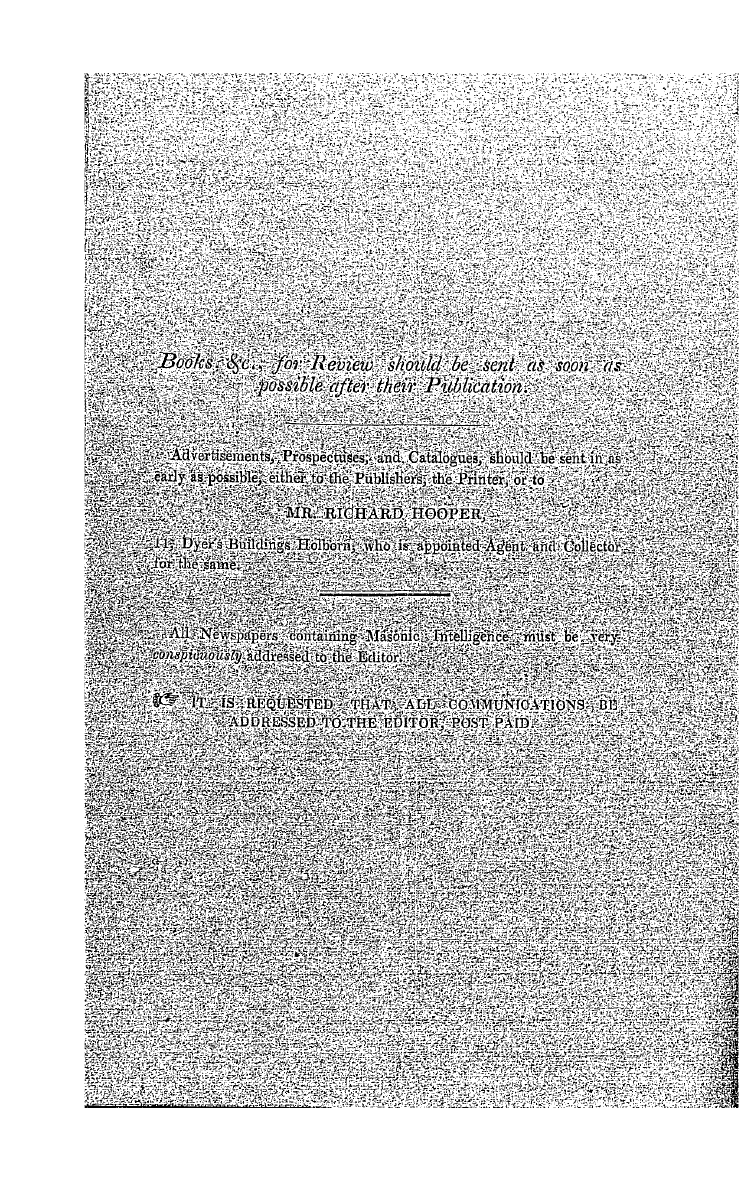-
Articles/Ads
Article TO THE EDITOR OF THE FREEMASONS' REVIEW. Page 1 of 8 →
Note: This text has been automatically extracted via Optical Character Recognition (OCR) software.
To The Editor Of The Freemasons' Review.
TO THE EDITOR OF THE FREEMASONS' REVIEW .
SIR , —As the work of Mr . O'Brien on the Round Towers of Ireland has attracted no inconsiderable share of attention , perhaps you will deem the following remarks upon one of the Round Towers in Scotland , which were embodied into an Essay and laid by me ( without the slightest knowledge of Mr . O'Brien ' s labours )
before the Antiquarian Society of Edinburgh , in the month of January last , deserving a place in your interesting miscellany . Yours very obediently ,
London , R . TYTLER , M . D . Aug . 1 st , 1834 . One of the most remarkable antiquities iu Great Britain is the Anwent Round Tower , at present standing within the
Churchyard ofthe city of Brechin , in the shire of Angus , in Scotland . This Tower is usually called "the Little Steeple of Brechin , " in contradistinction to the larger Tower , or Steeple of the Church , which is a remnant of an ancient Cathedral , originally belonging to the Bishoprick of Brechin , that is still one of the sees of the Episcopal Church of Scotland , ancl gives a title , at present , to the
premier Bishop ; " the Bishop of Brechin " being the title at this day bestowed upon the first Pastor of the Episcopal Church of North Britain . The age iu which the Little Steeple was erected is wholly unknown , —as well as the race of people by whom it was constructed , ancl the particular purposes which were contemplated by its
Builders . This extraordinary remain of a former age has been examined and described by some of our most eminent researchers into British Antiquities , such as Gordon , Grose , and Pennant . By those writers , however , the question is left unresolved , at what era the Brechin Tower was built , whether by the Picts , in the most remote periods of British History , or by the Culdees , and
other races of Christians , by whom our Holy Relig ion was introduced into these Islands . "The Little Steeple" consists of a beautiful slender cylinder or hollow p illar , about eighty feet high , built with sixty rows of smooth
Note: This text has been automatically extracted via Optical Character Recognition (OCR) software.
To The Editor Of The Freemasons' Review.
TO THE EDITOR OF THE FREEMASONS' REVIEW .
SIR , —As the work of Mr . O'Brien on the Round Towers of Ireland has attracted no inconsiderable share of attention , perhaps you will deem the following remarks upon one of the Round Towers in Scotland , which were embodied into an Essay and laid by me ( without the slightest knowledge of Mr . O'Brien ' s labours )
before the Antiquarian Society of Edinburgh , in the month of January last , deserving a place in your interesting miscellany . Yours very obediently ,
London , R . TYTLER , M . D . Aug . 1 st , 1834 . One of the most remarkable antiquities iu Great Britain is the Anwent Round Tower , at present standing within the
Churchyard ofthe city of Brechin , in the shire of Angus , in Scotland . This Tower is usually called "the Little Steeple of Brechin , " in contradistinction to the larger Tower , or Steeple of the Church , which is a remnant of an ancient Cathedral , originally belonging to the Bishoprick of Brechin , that is still one of the sees of the Episcopal Church of Scotland , ancl gives a title , at present , to the
premier Bishop ; " the Bishop of Brechin " being the title at this day bestowed upon the first Pastor of the Episcopal Church of North Britain . The age iu which the Little Steeple was erected is wholly unknown , —as well as the race of people by whom it was constructed , ancl the particular purposes which were contemplated by its
Builders . This extraordinary remain of a former age has been examined and described by some of our most eminent researchers into British Antiquities , such as Gordon , Grose , and Pennant . By those writers , however , the question is left unresolved , at what era the Brechin Tower was built , whether by the Picts , in the most remote periods of British History , or by the Culdees , and
other races of Christians , by whom our Holy Relig ion was introduced into these Islands . "The Little Steeple" consists of a beautiful slender cylinder or hollow p illar , about eighty feet high , built with sixty rows of smooth


























































